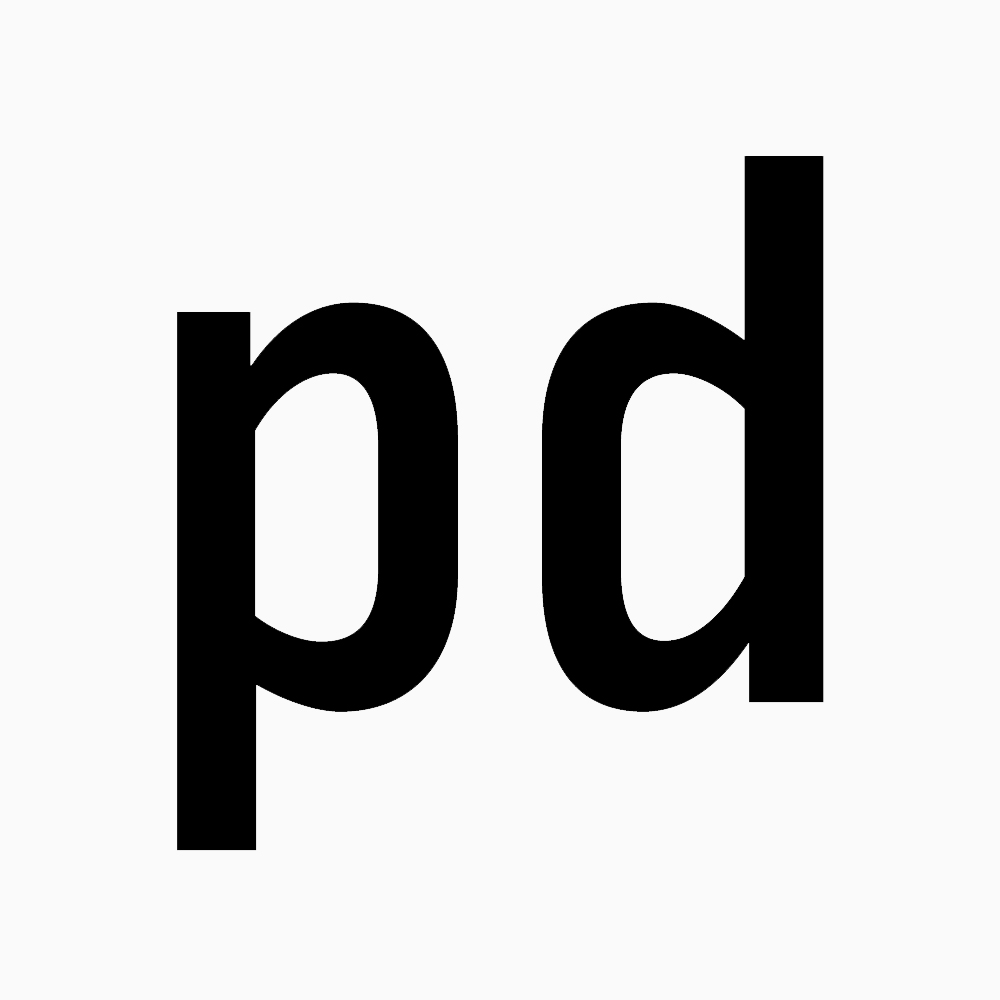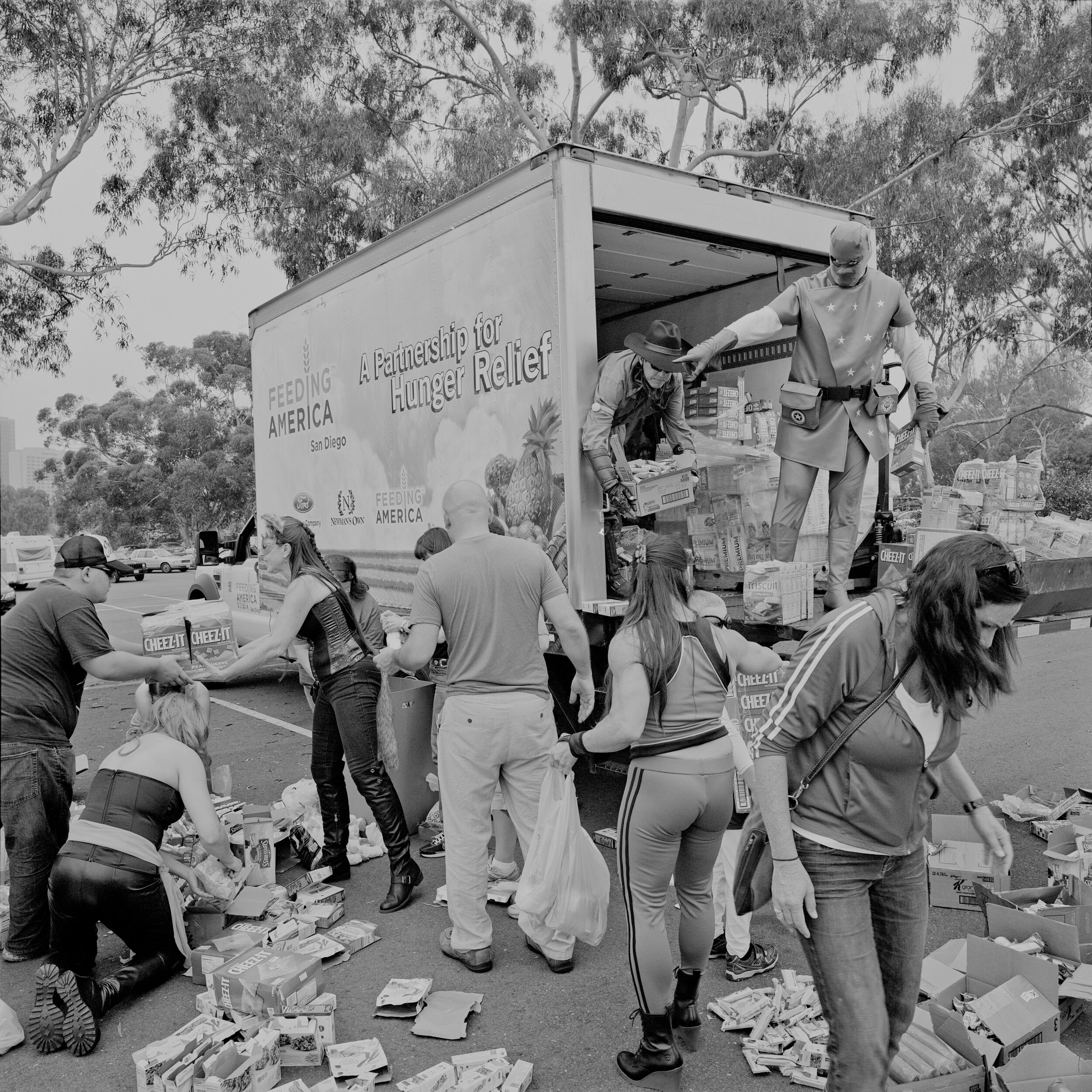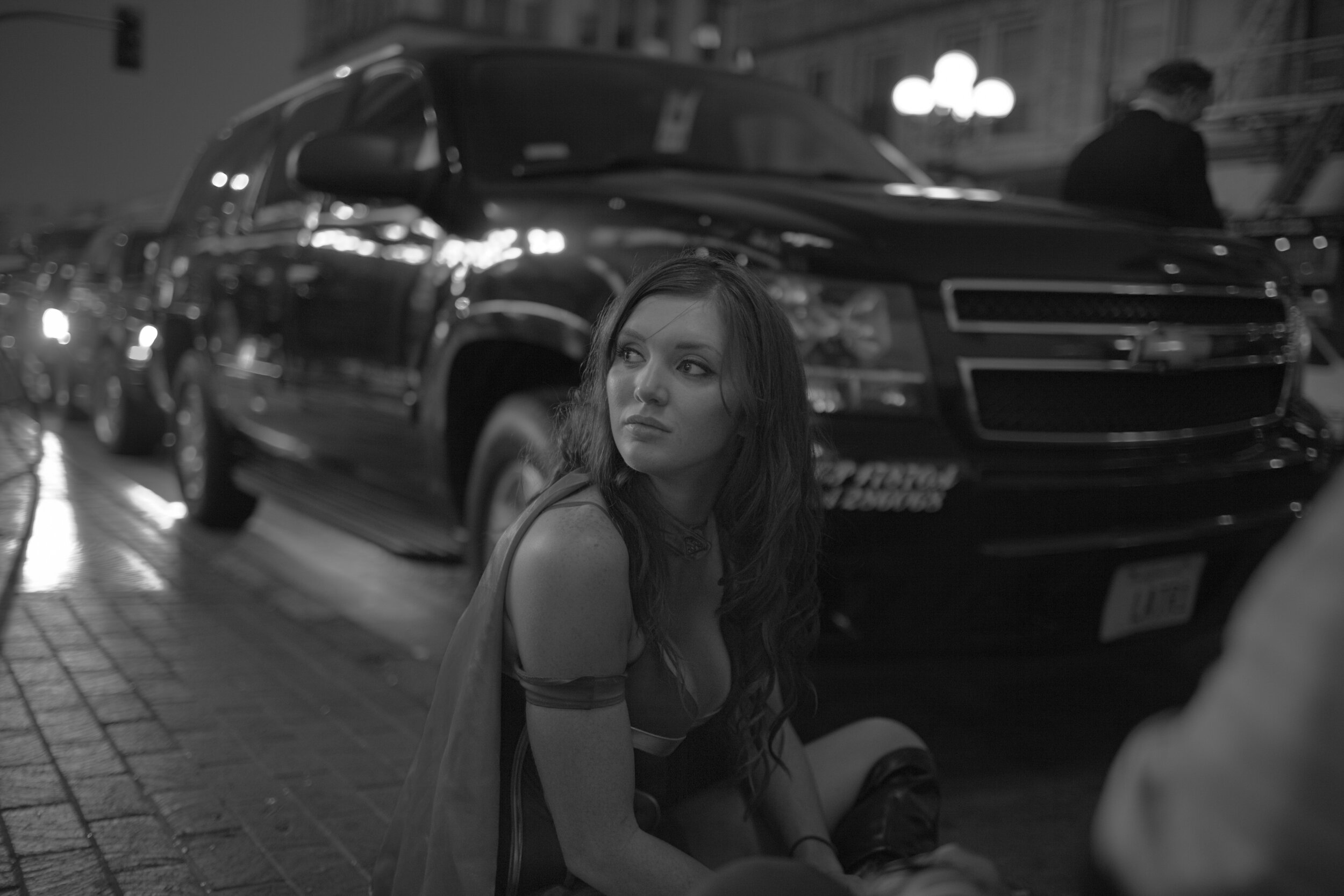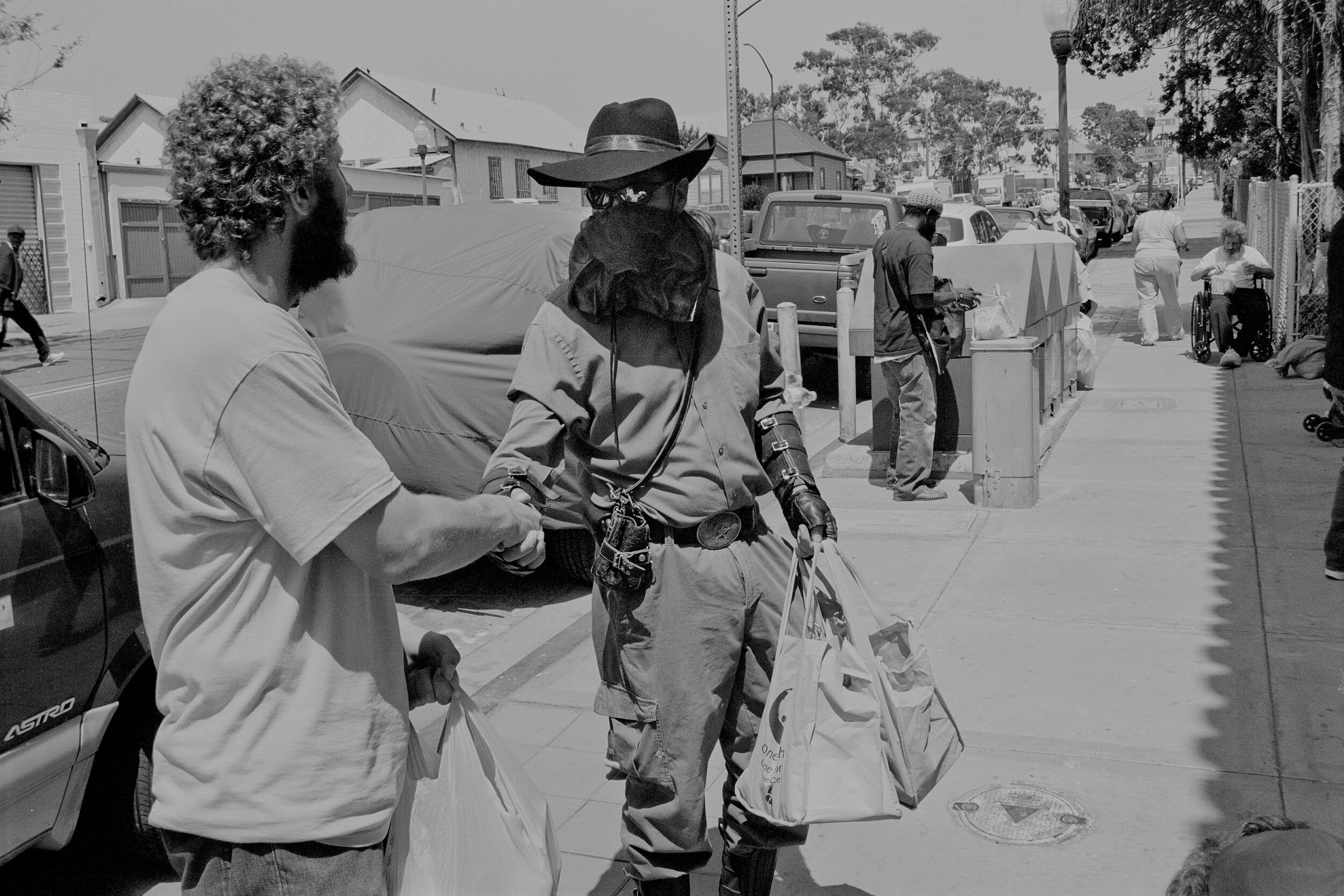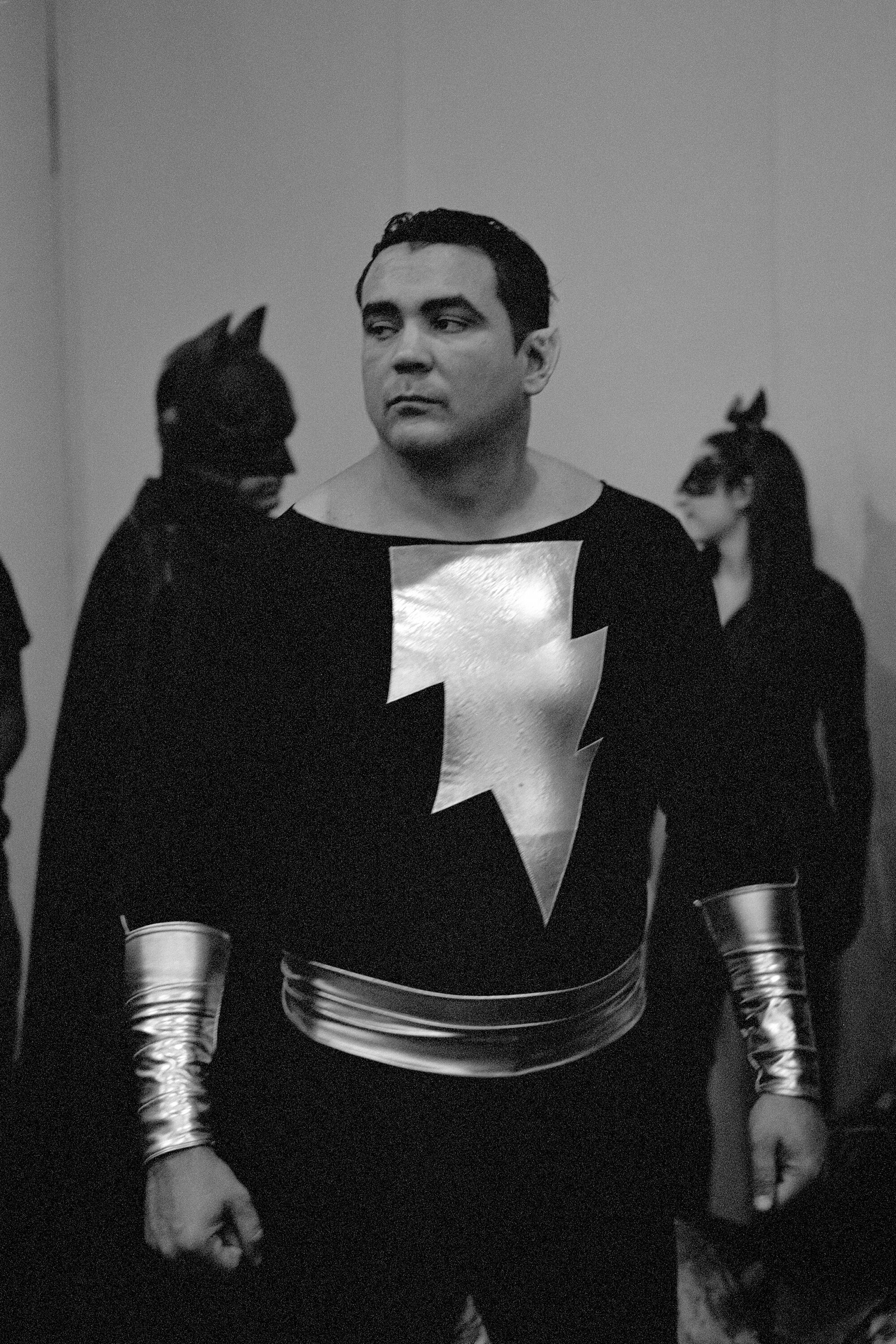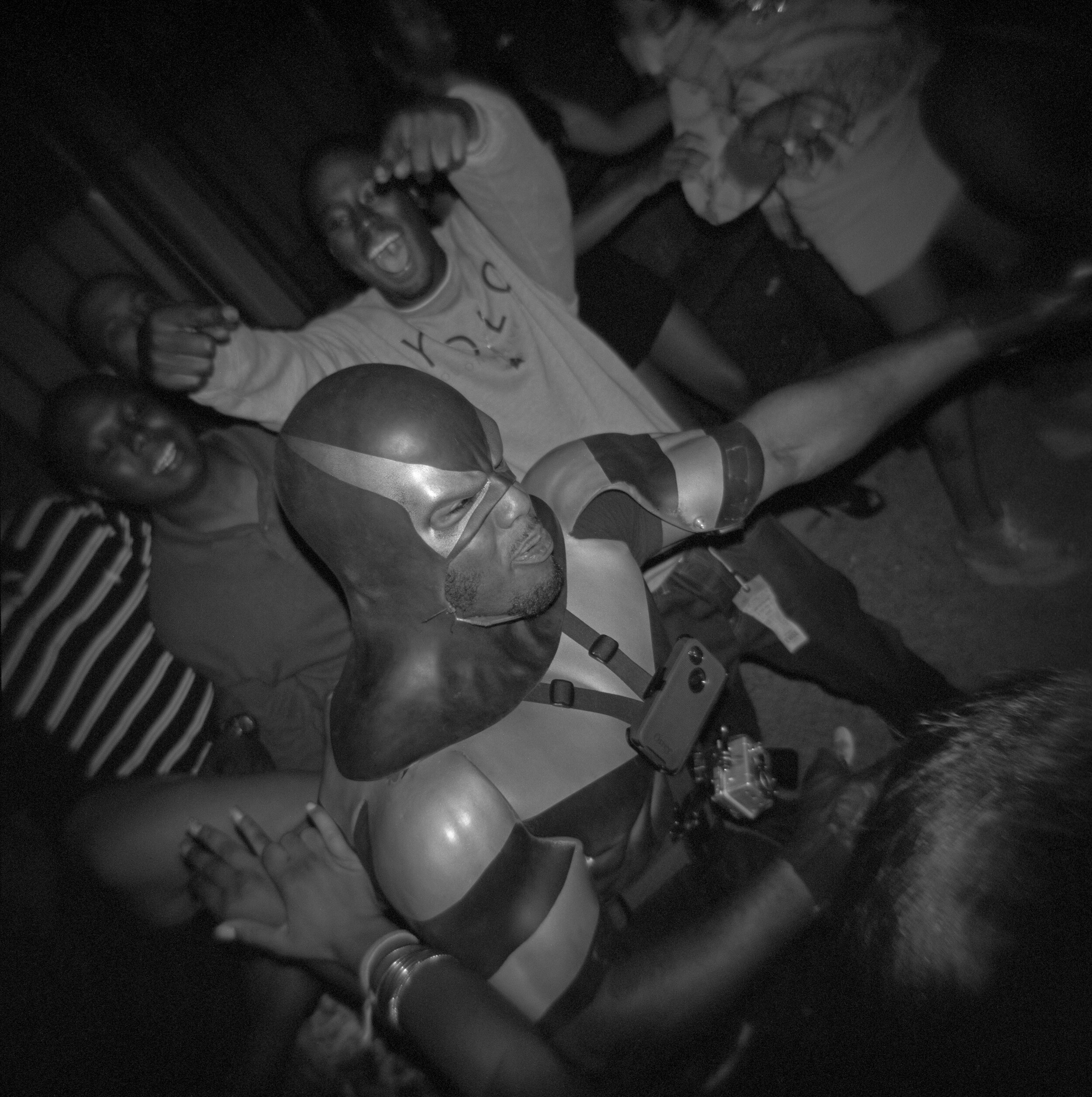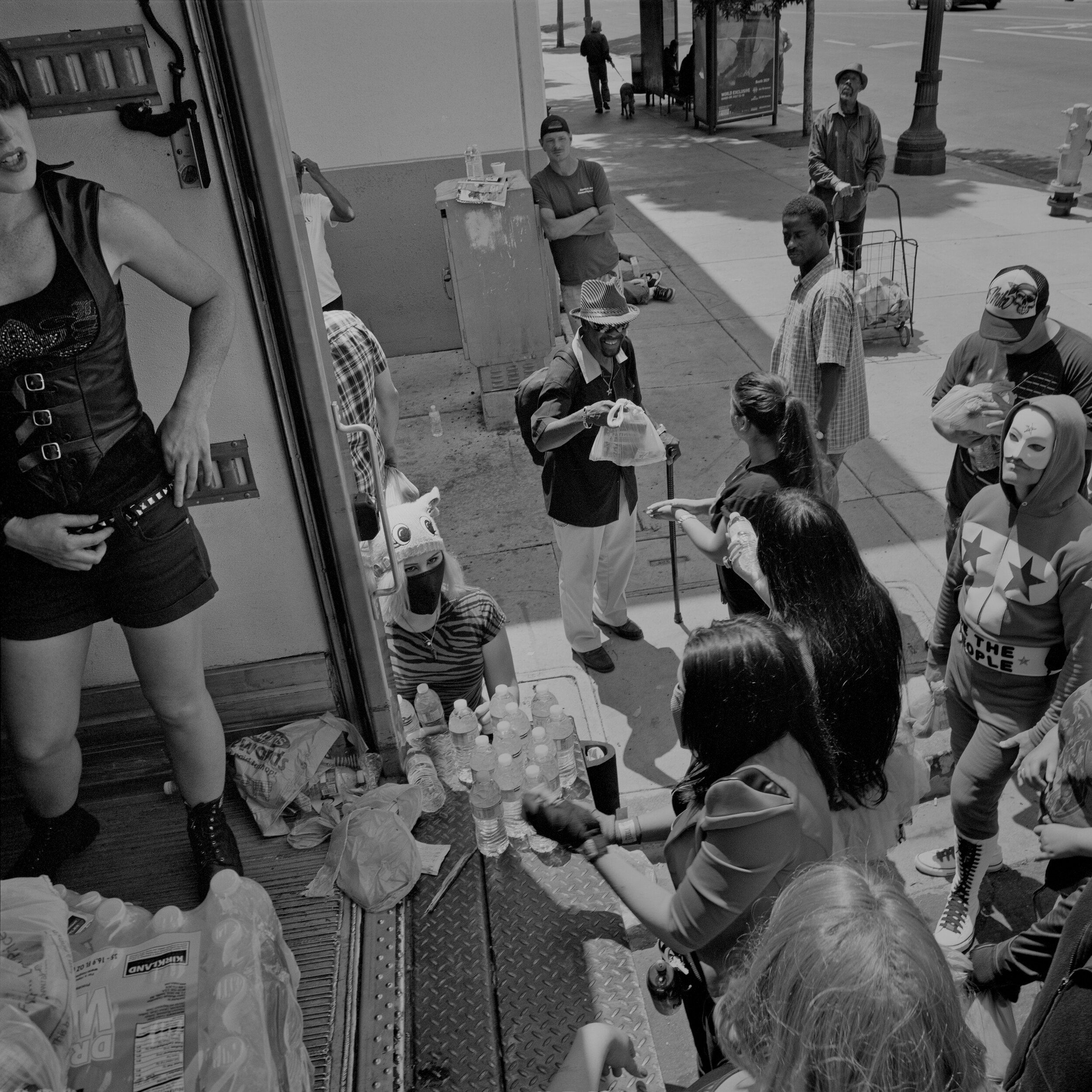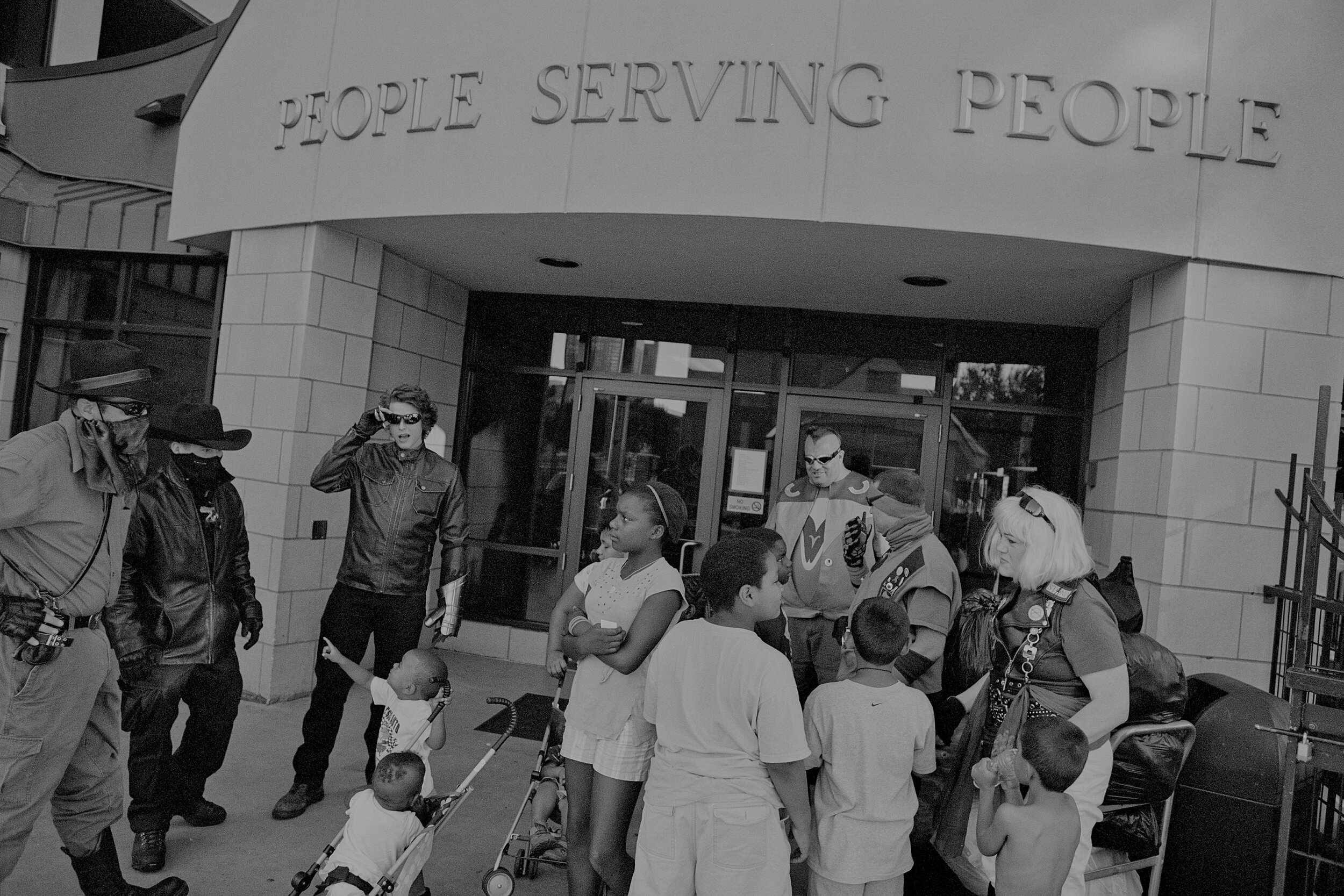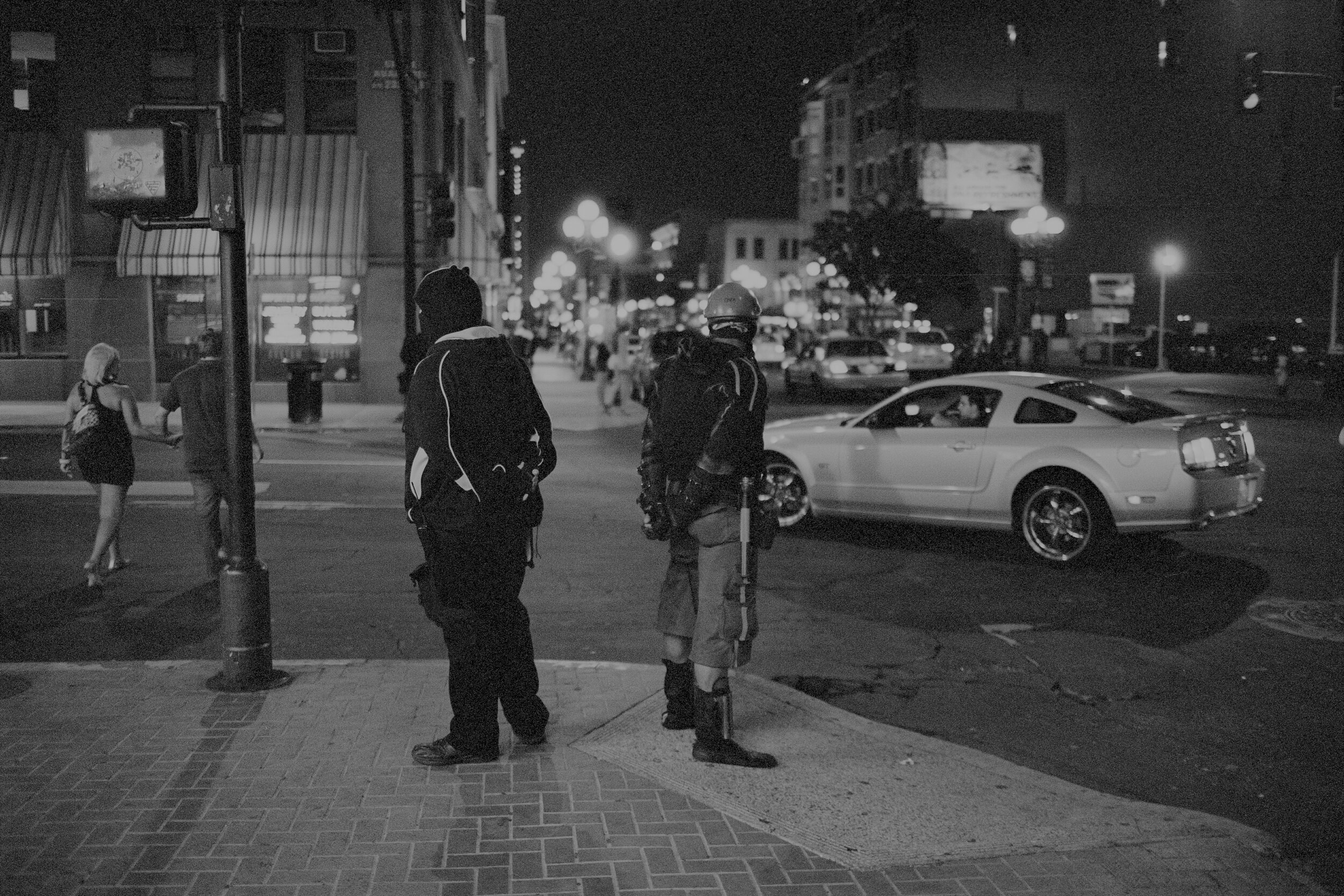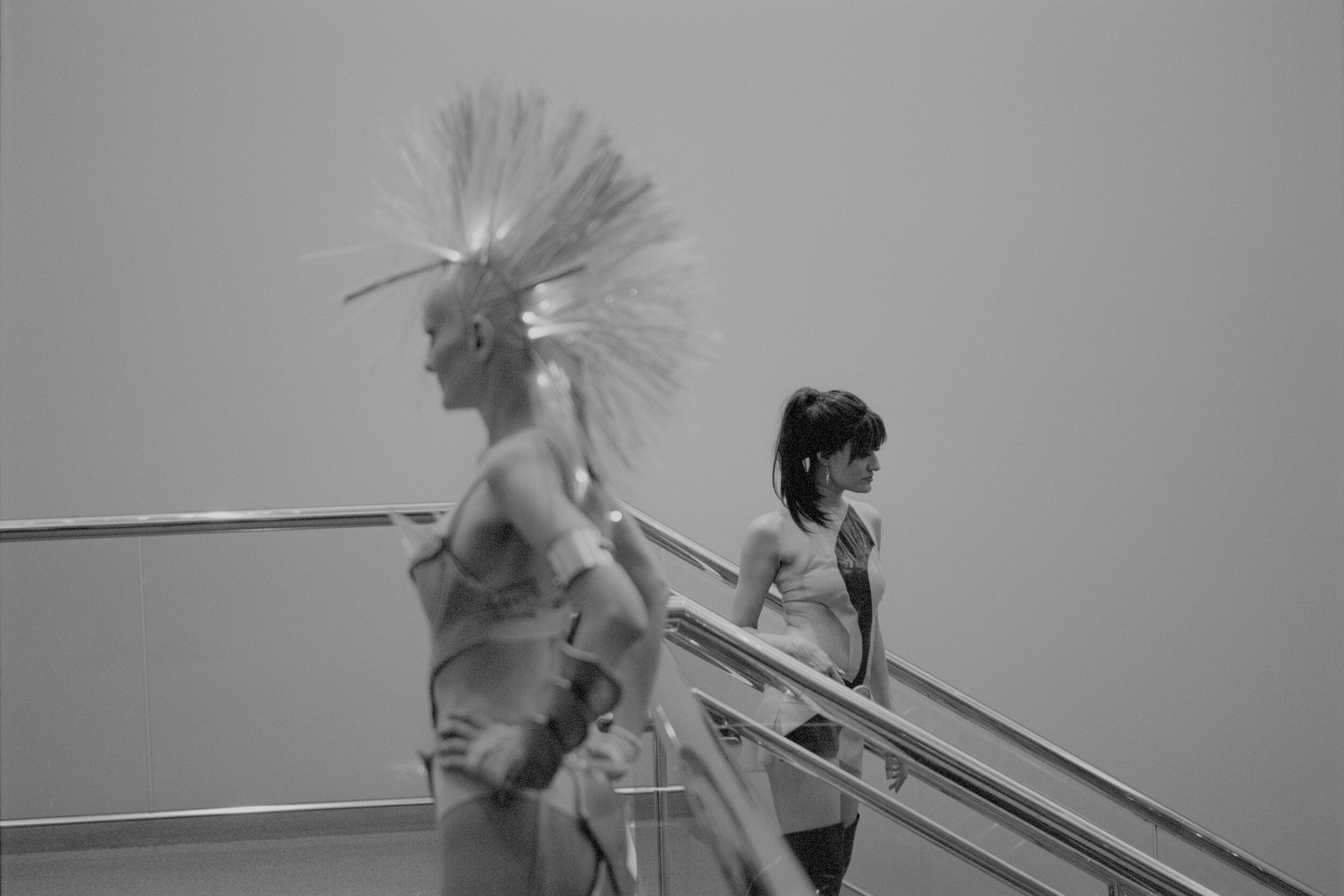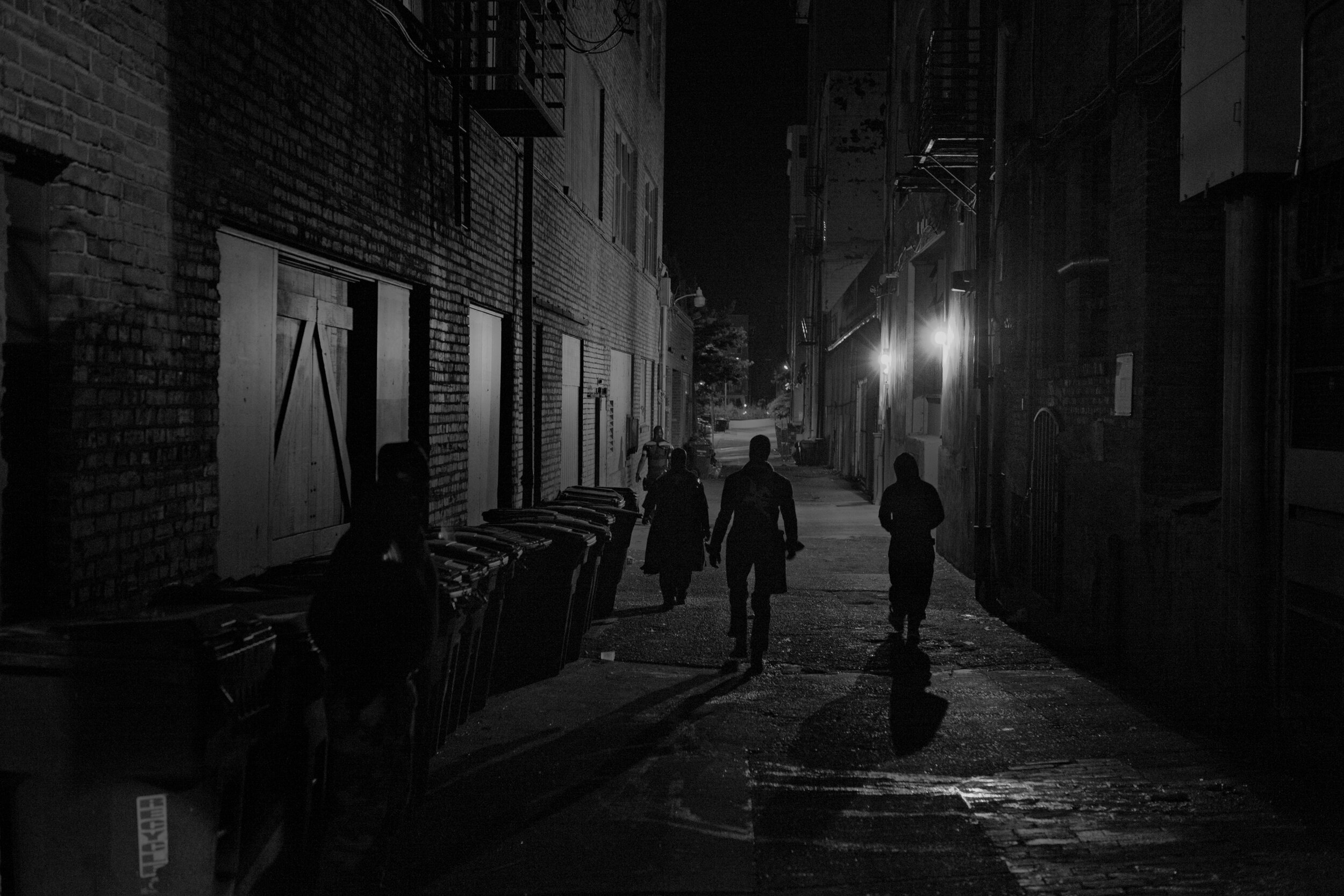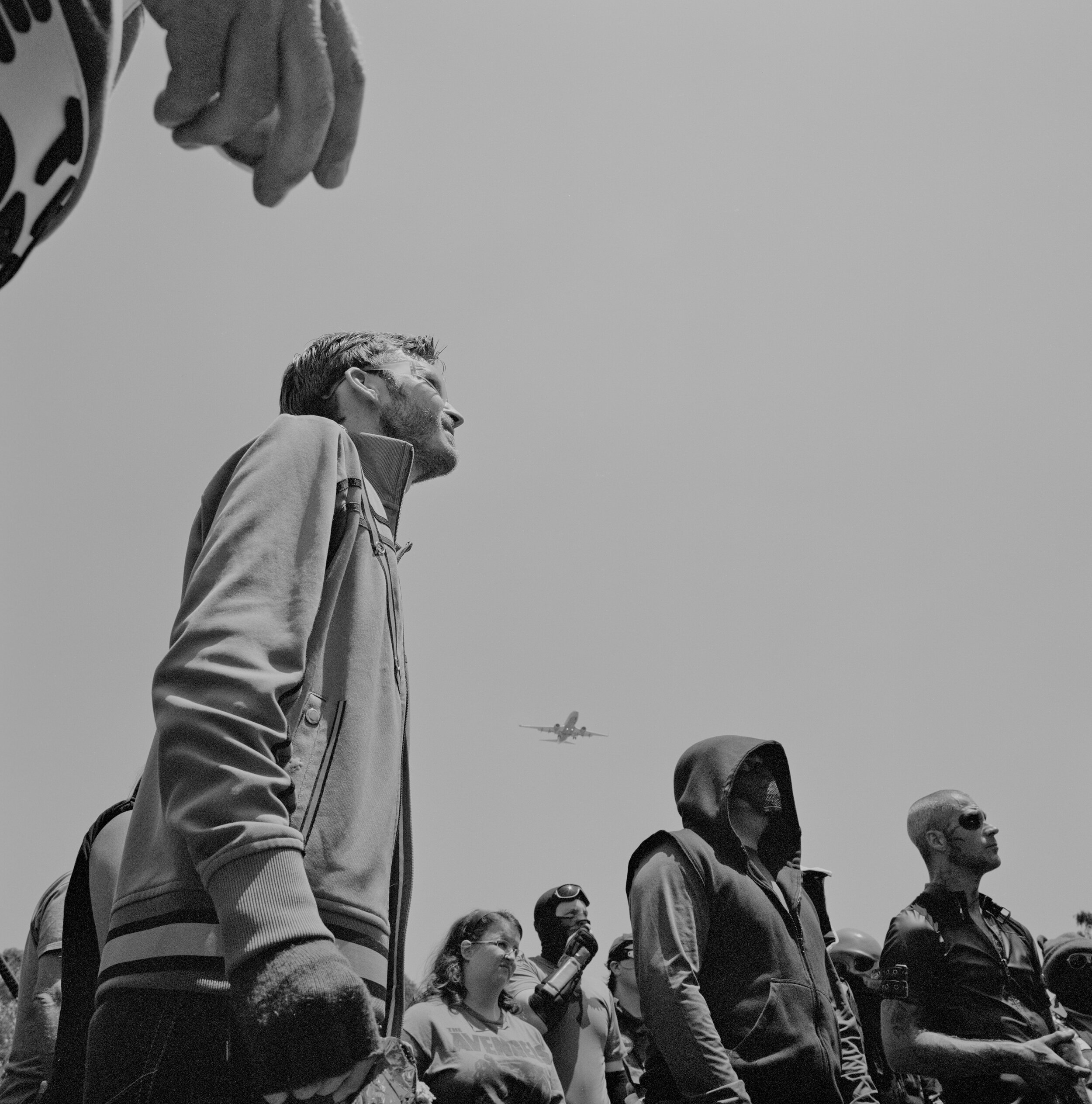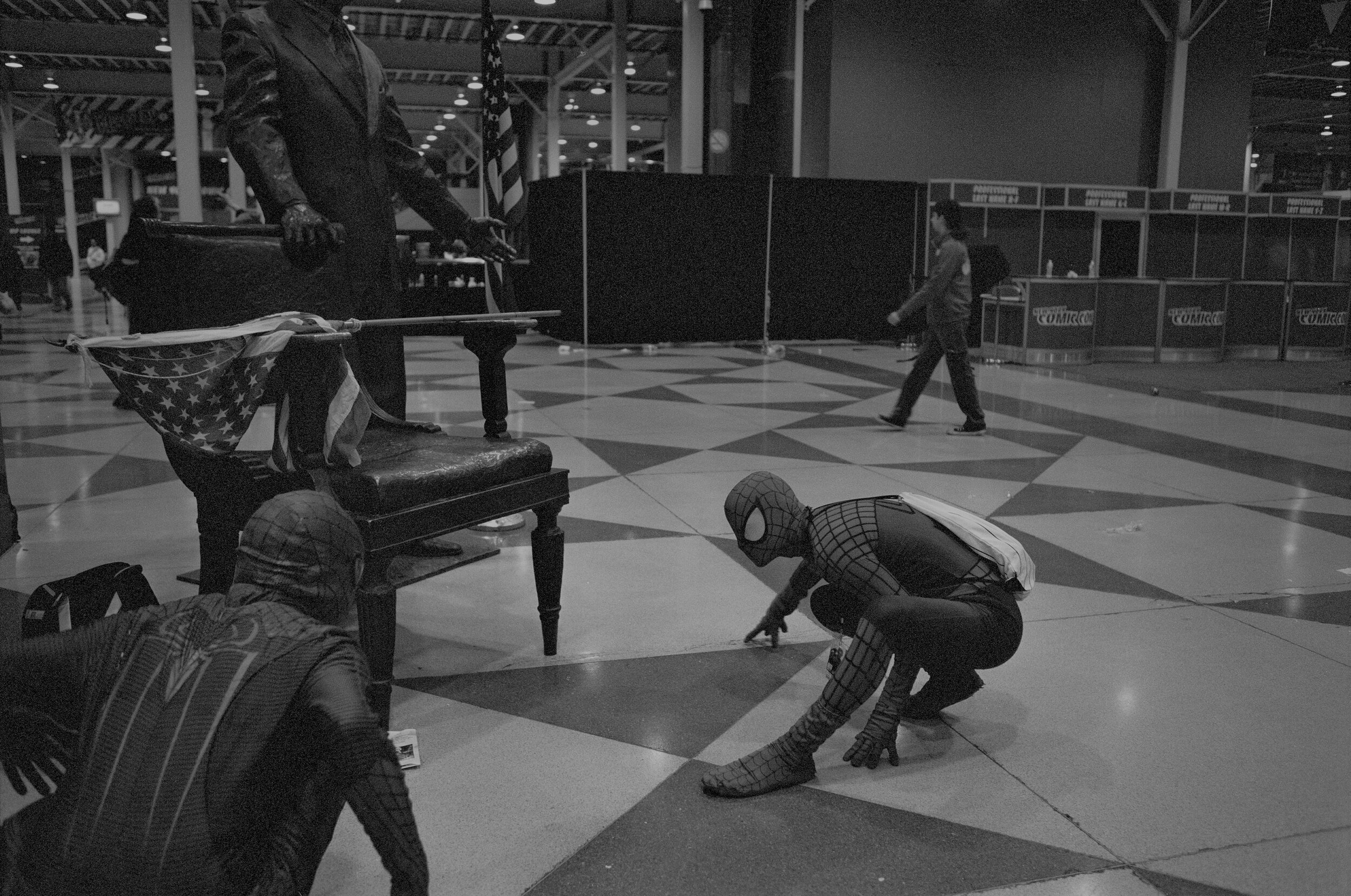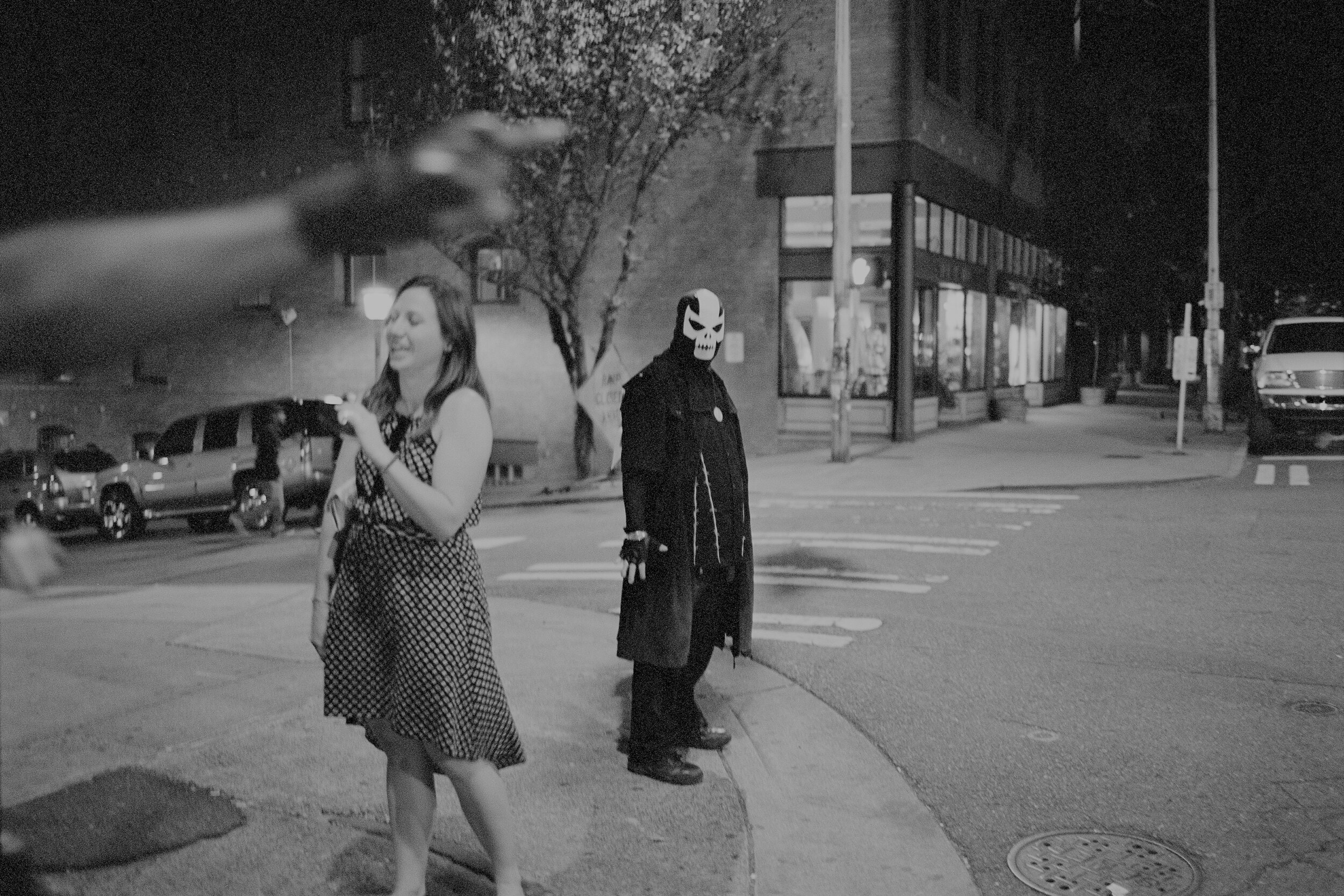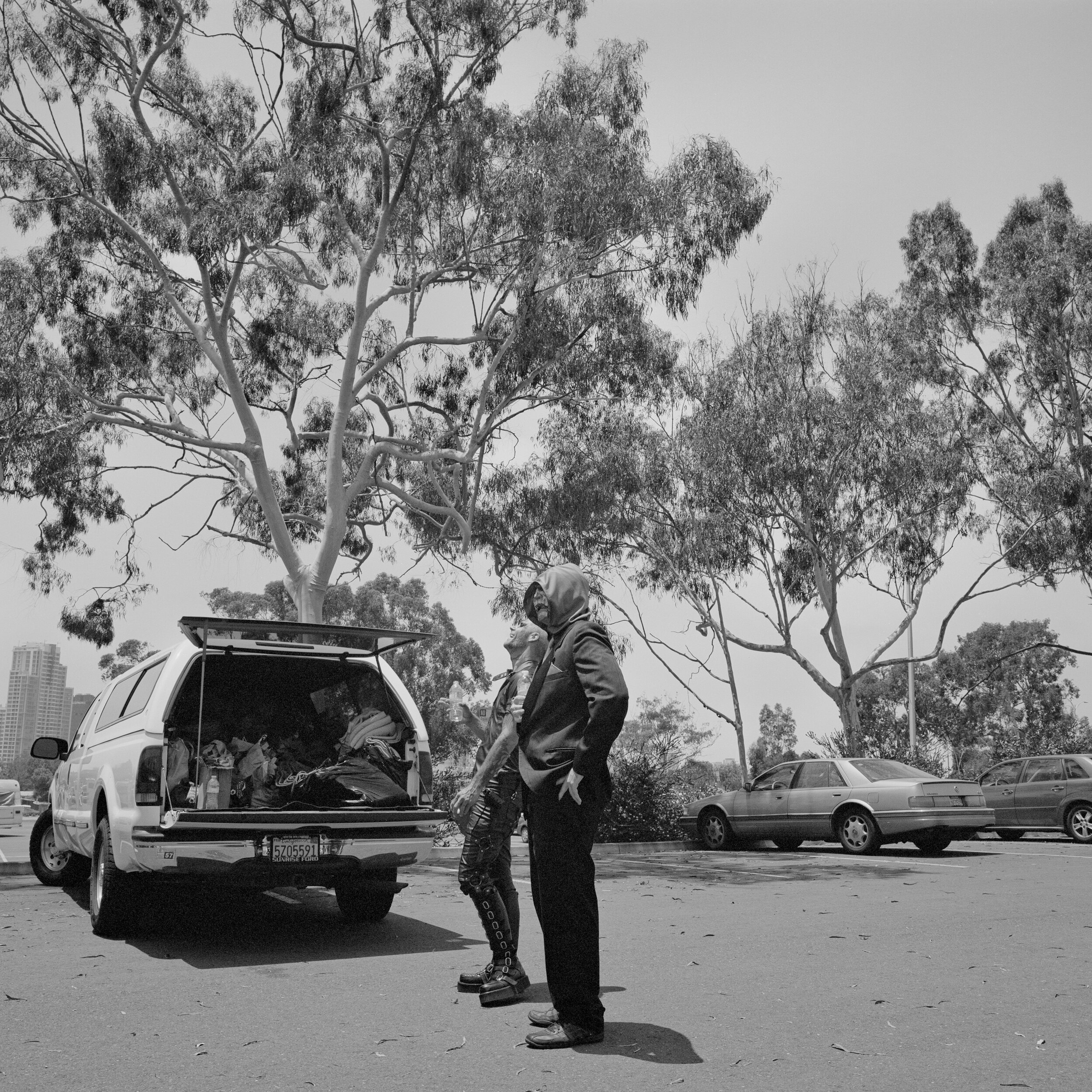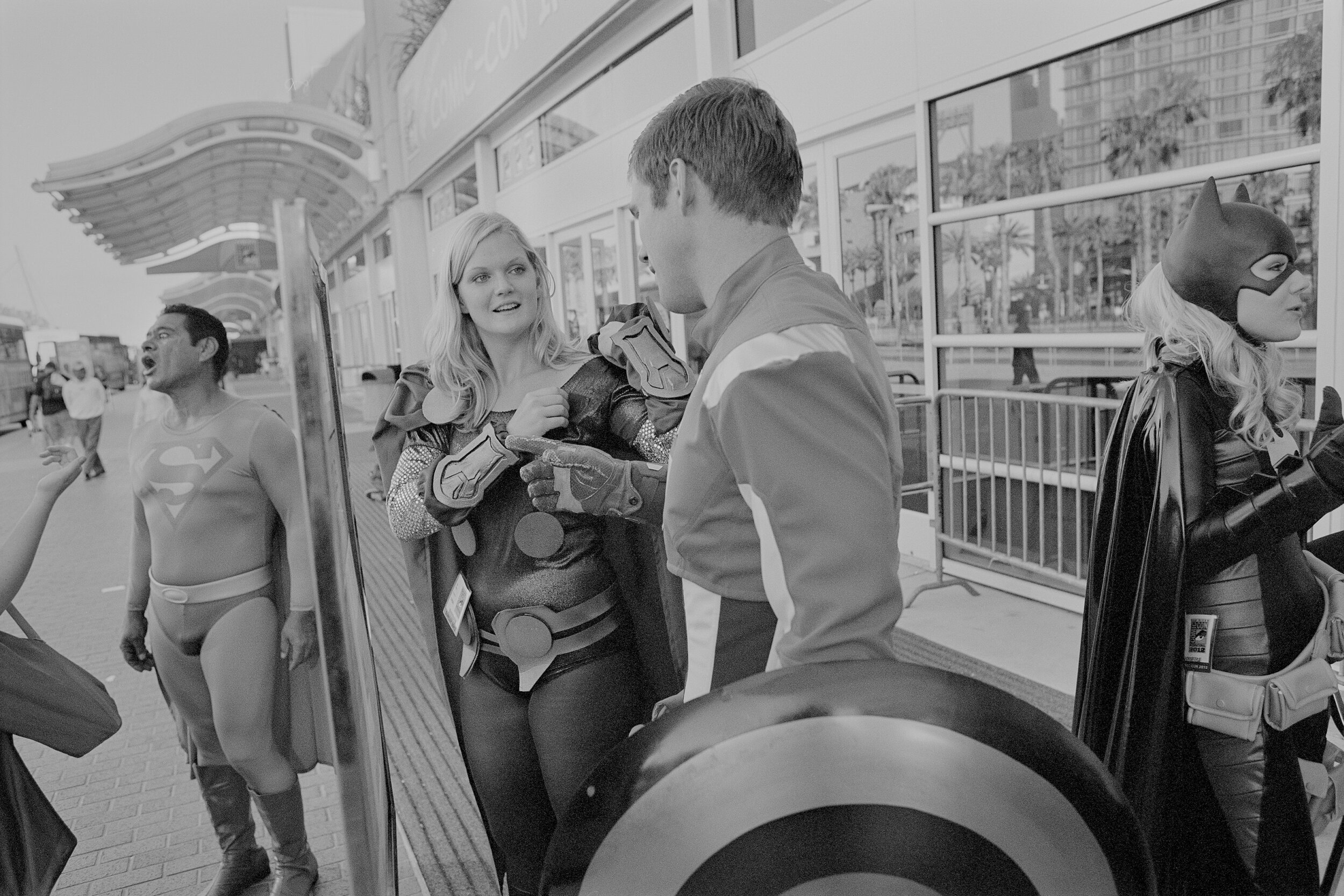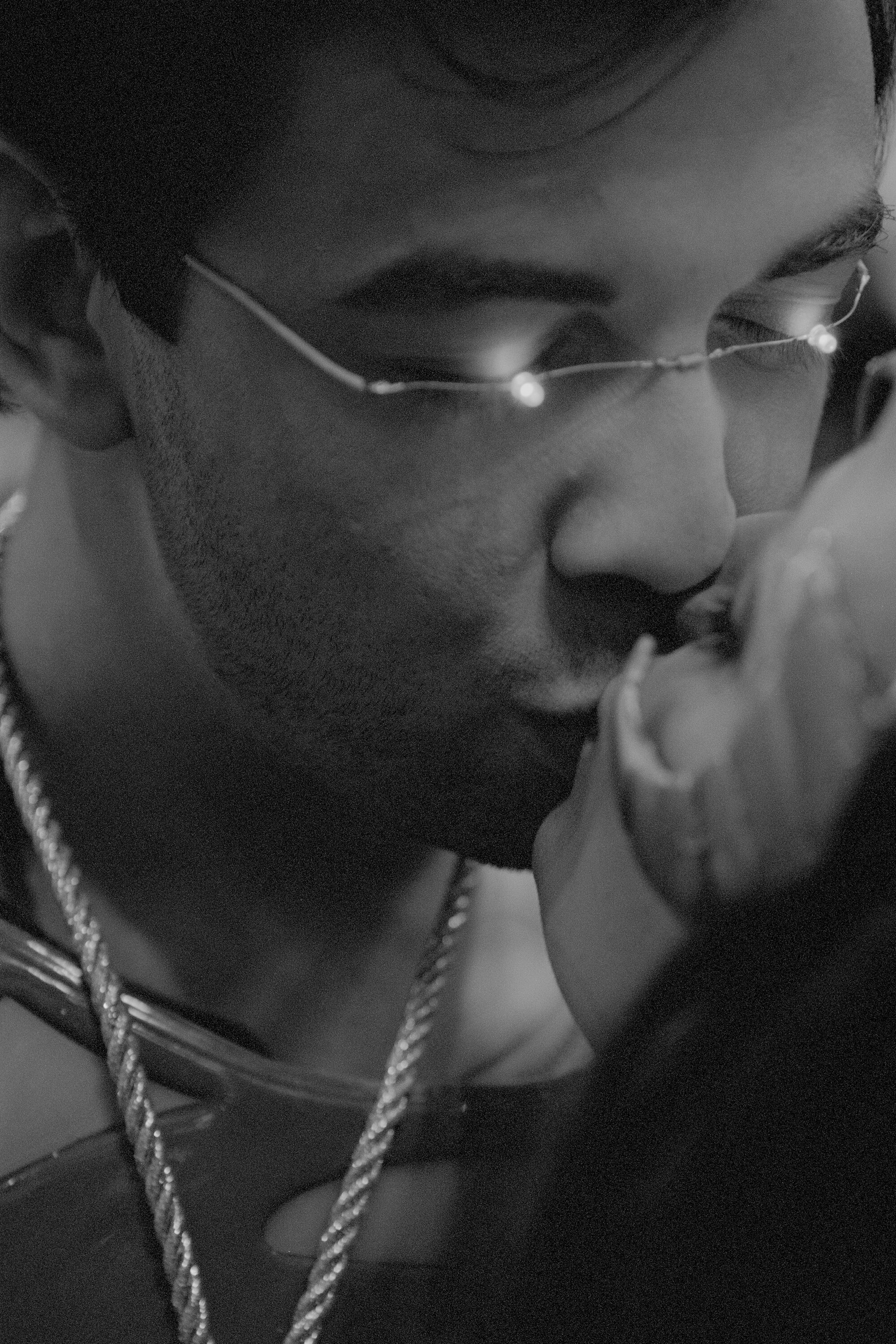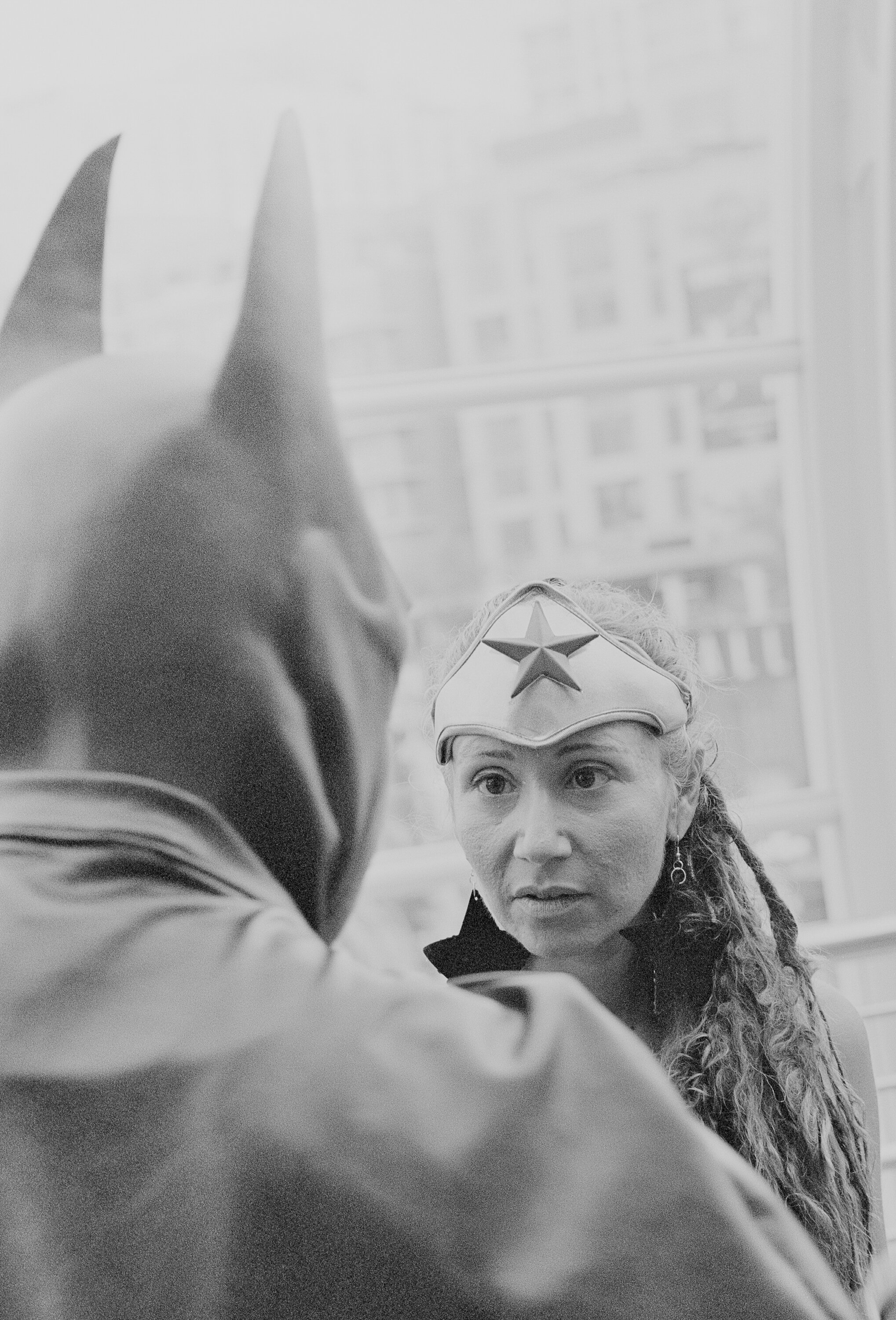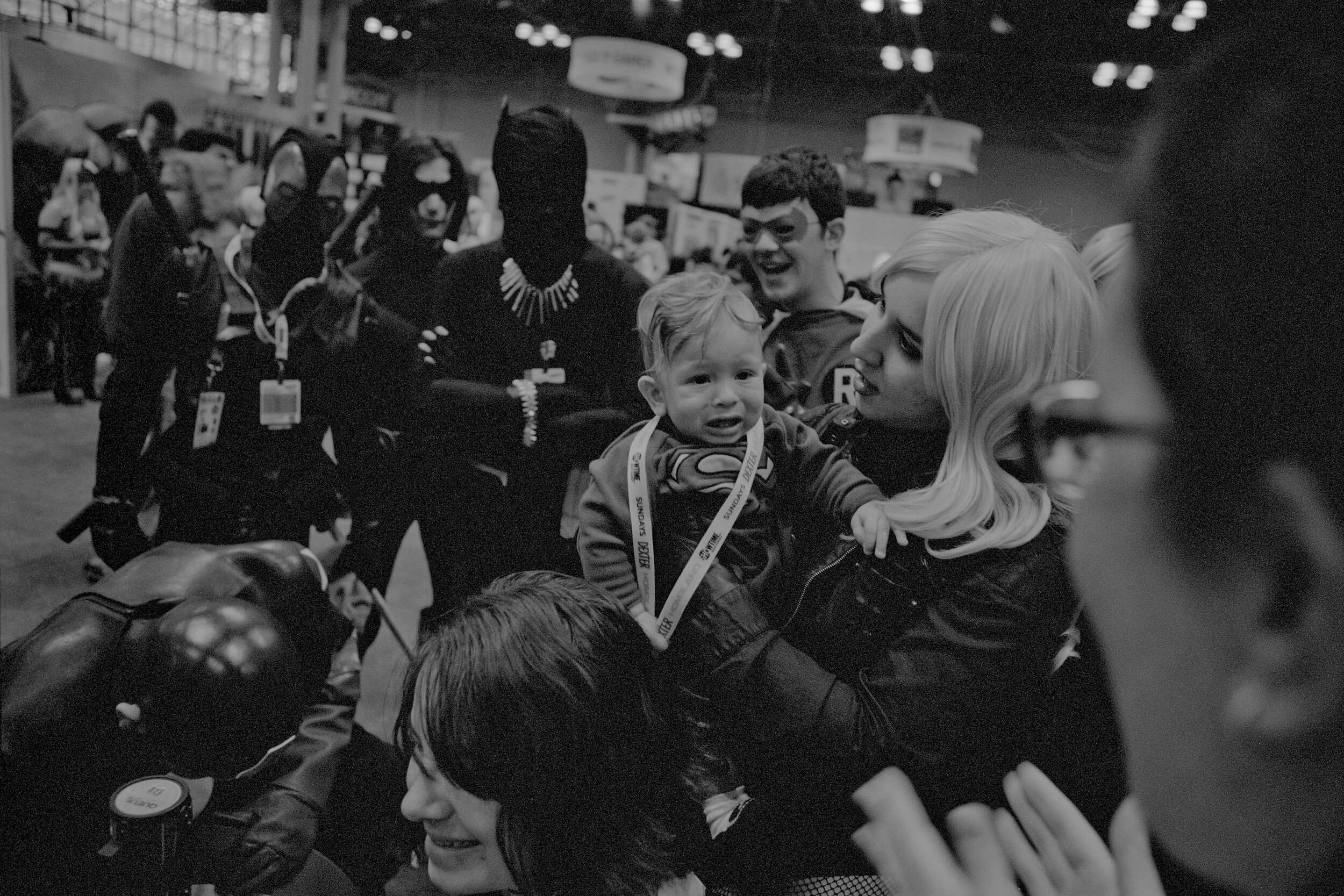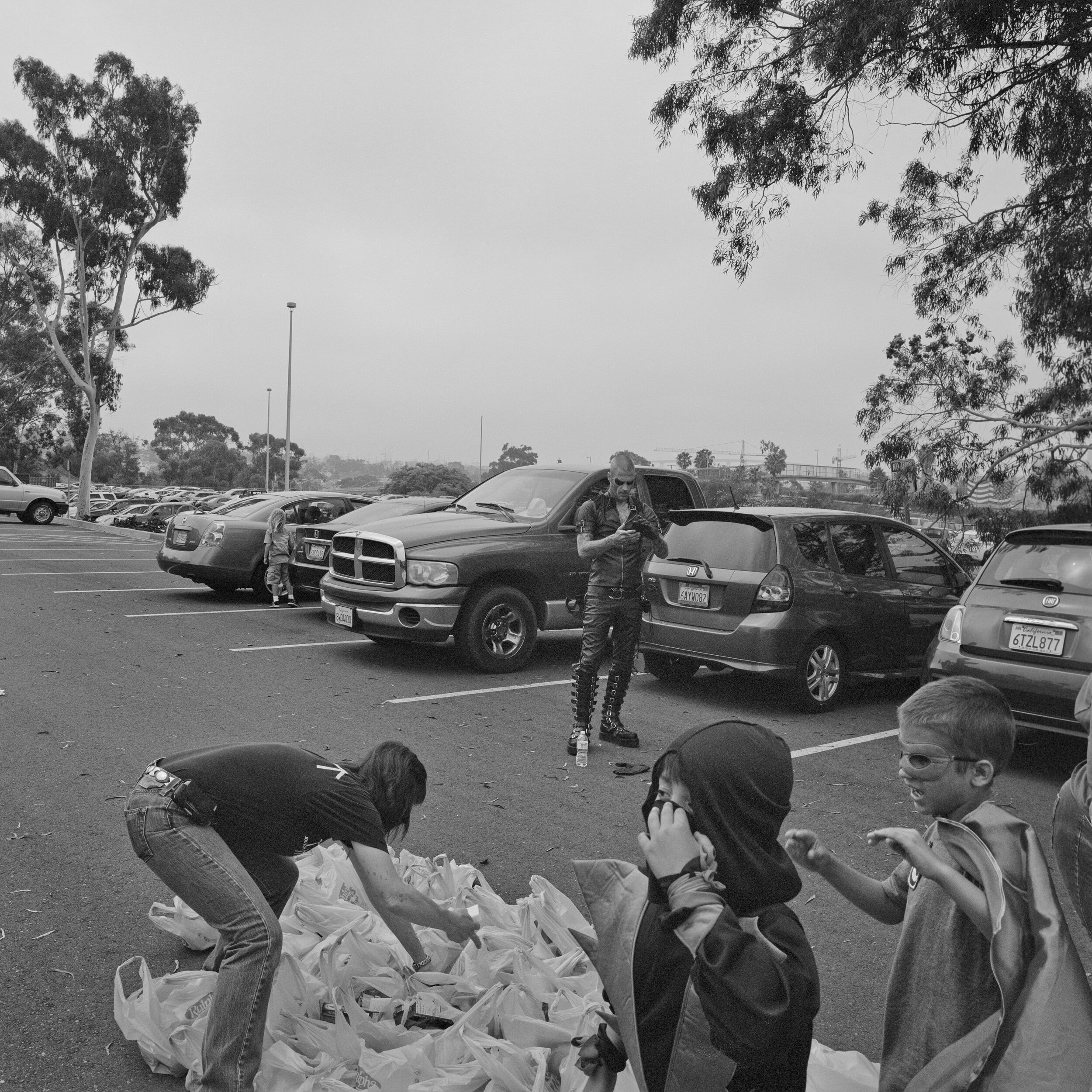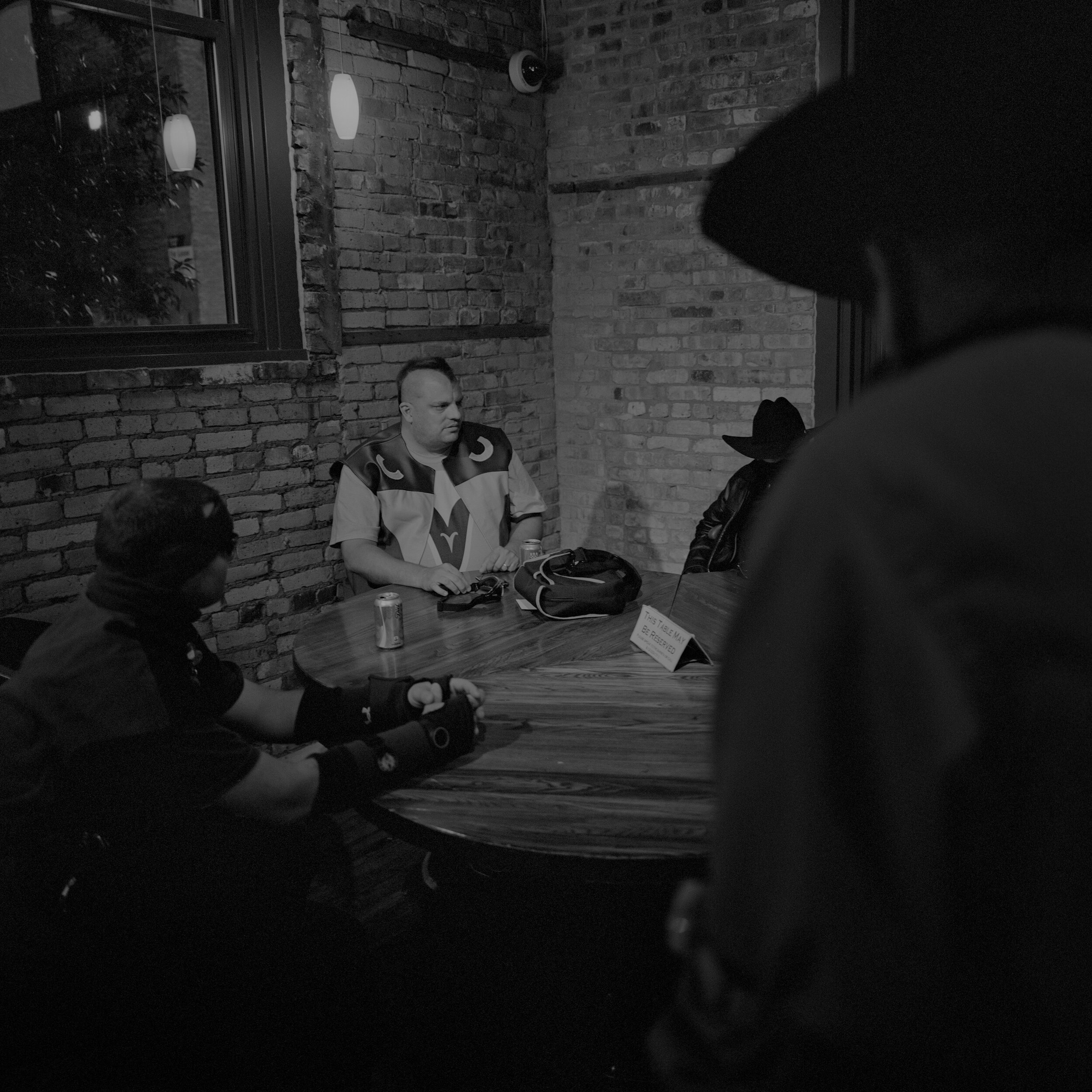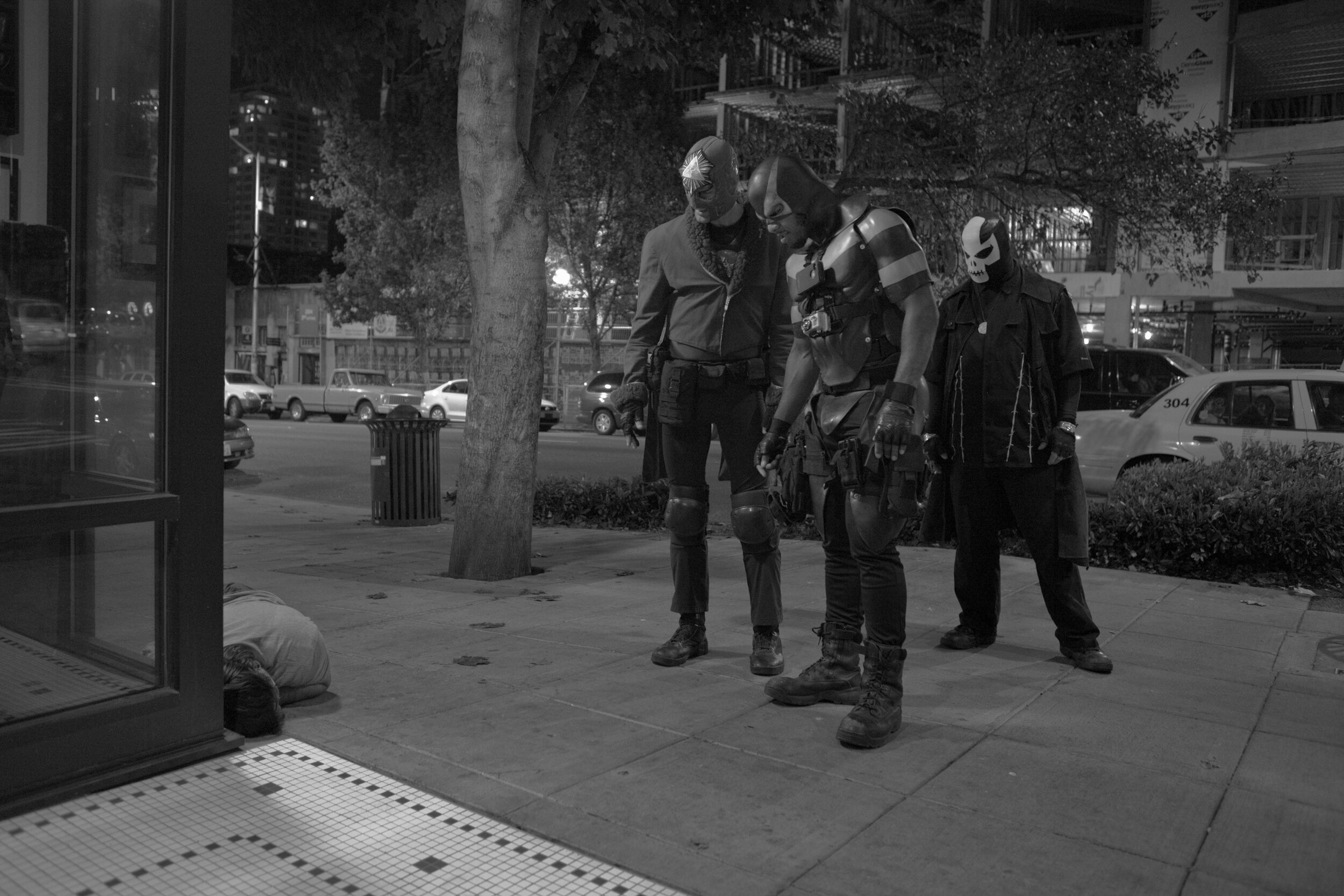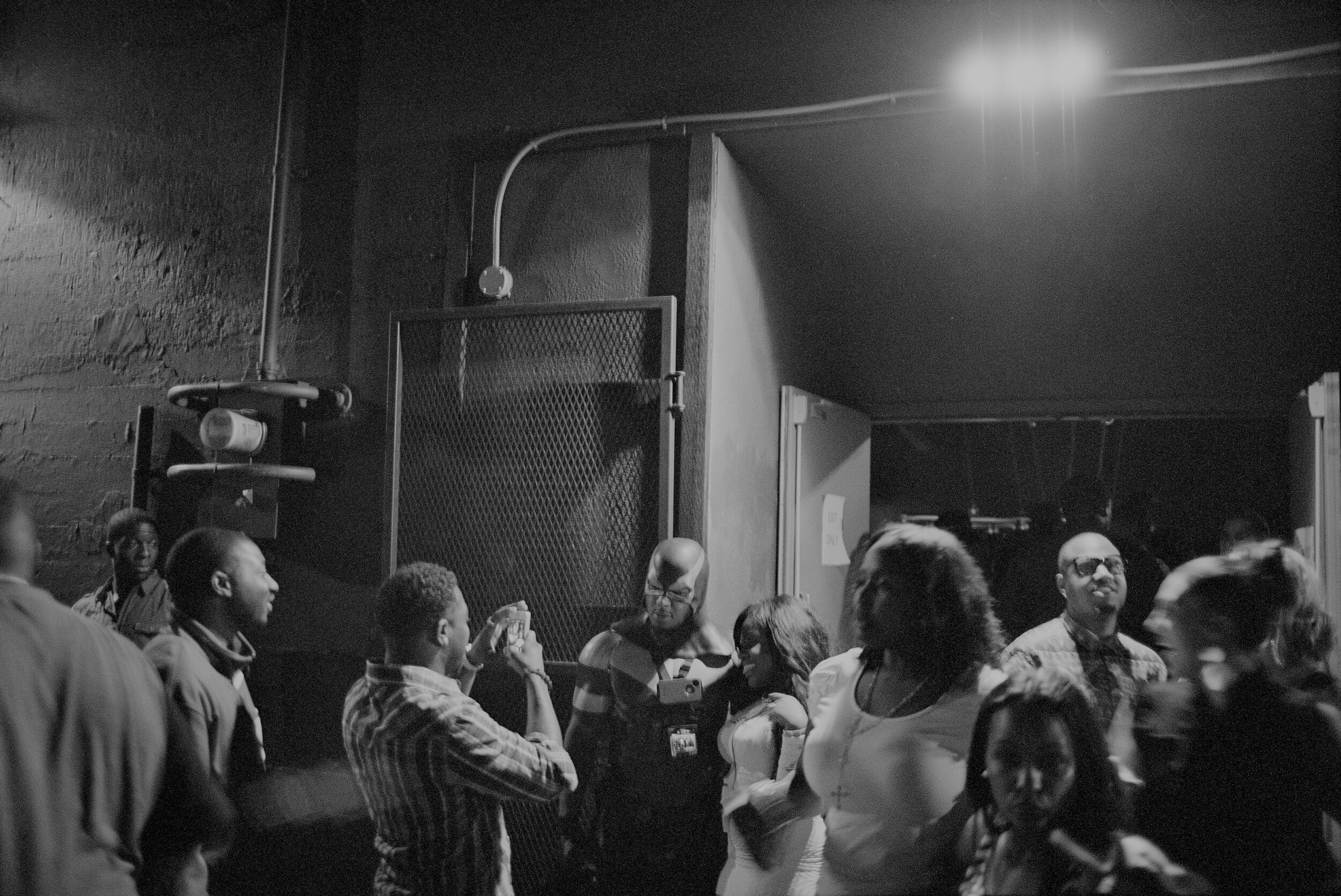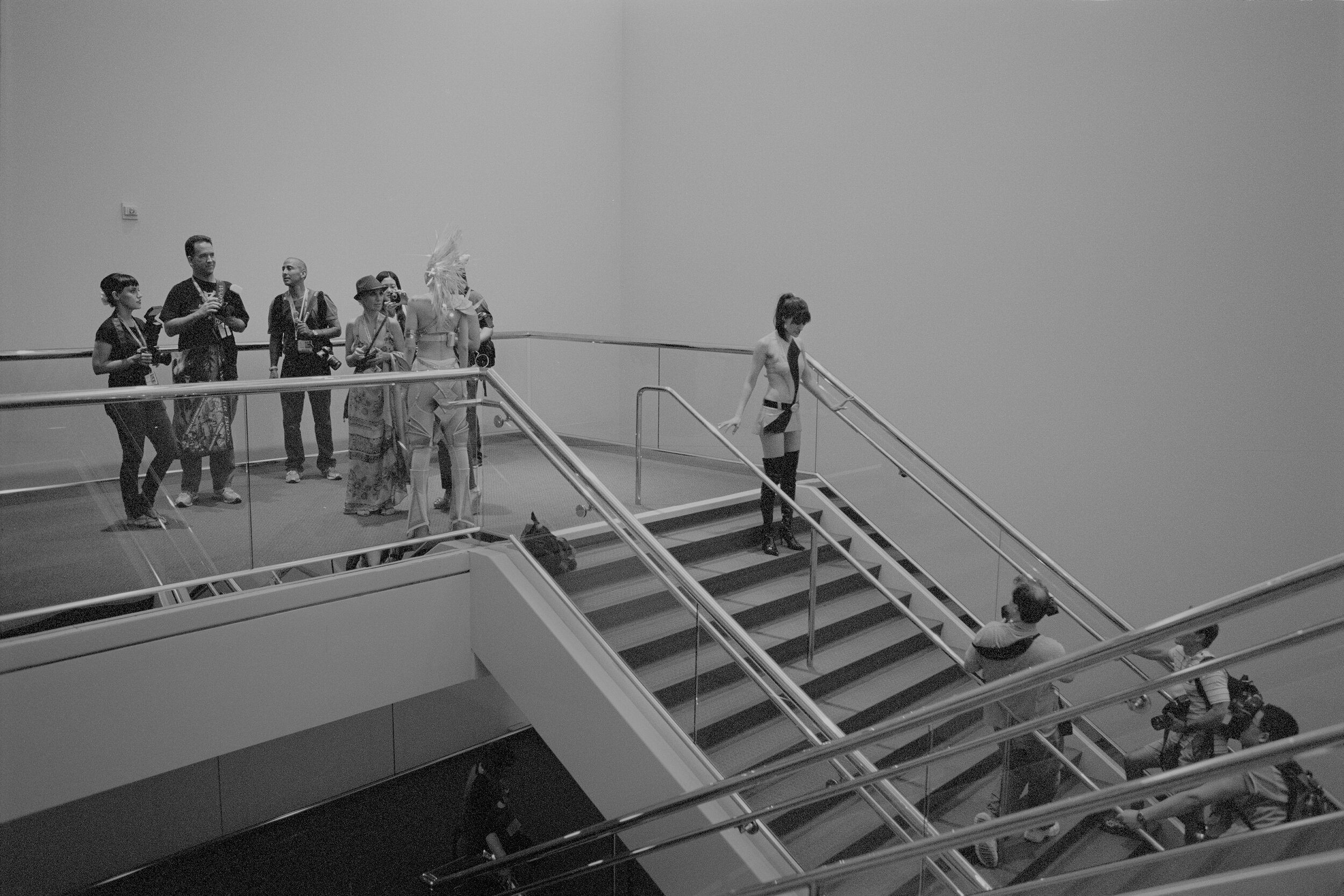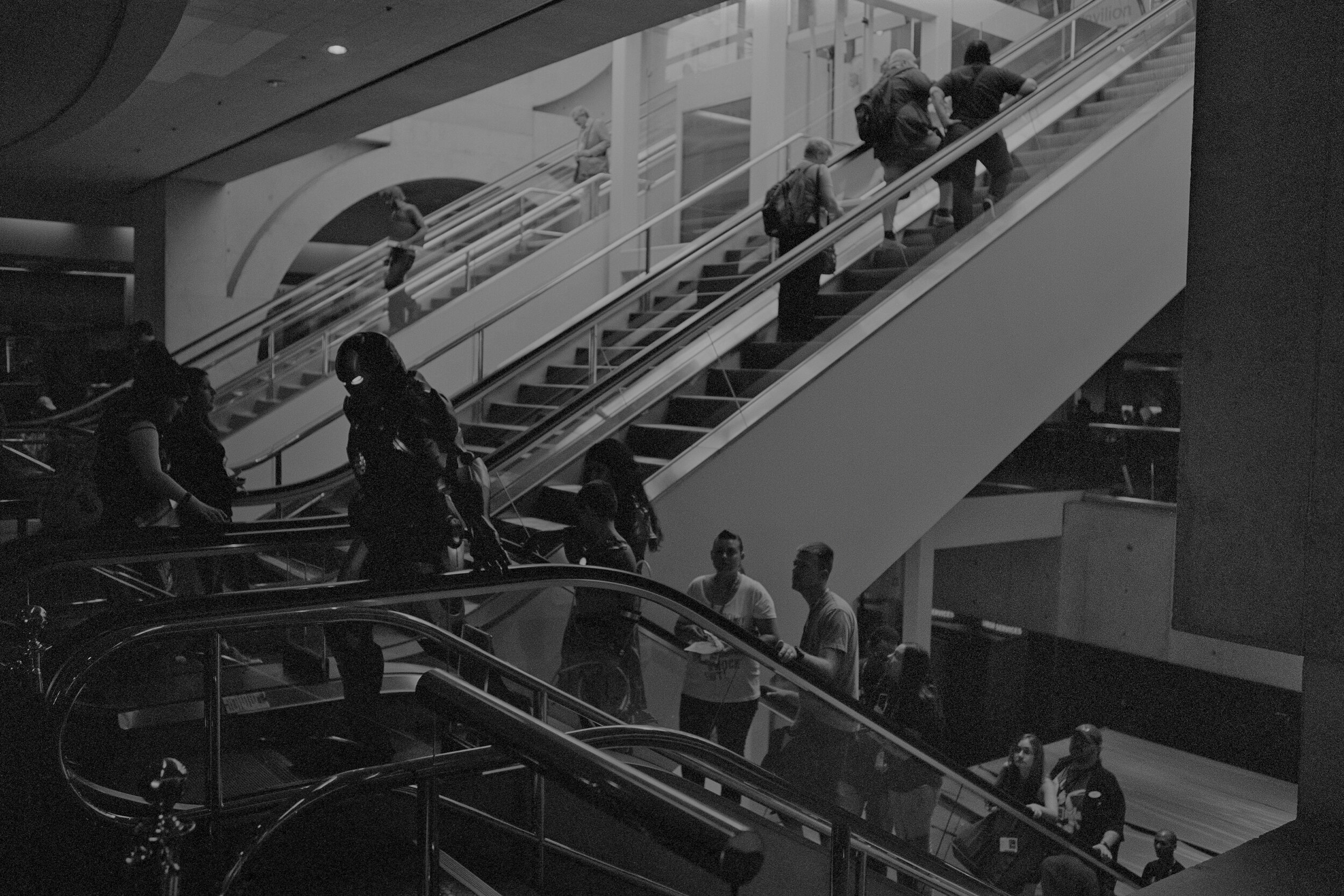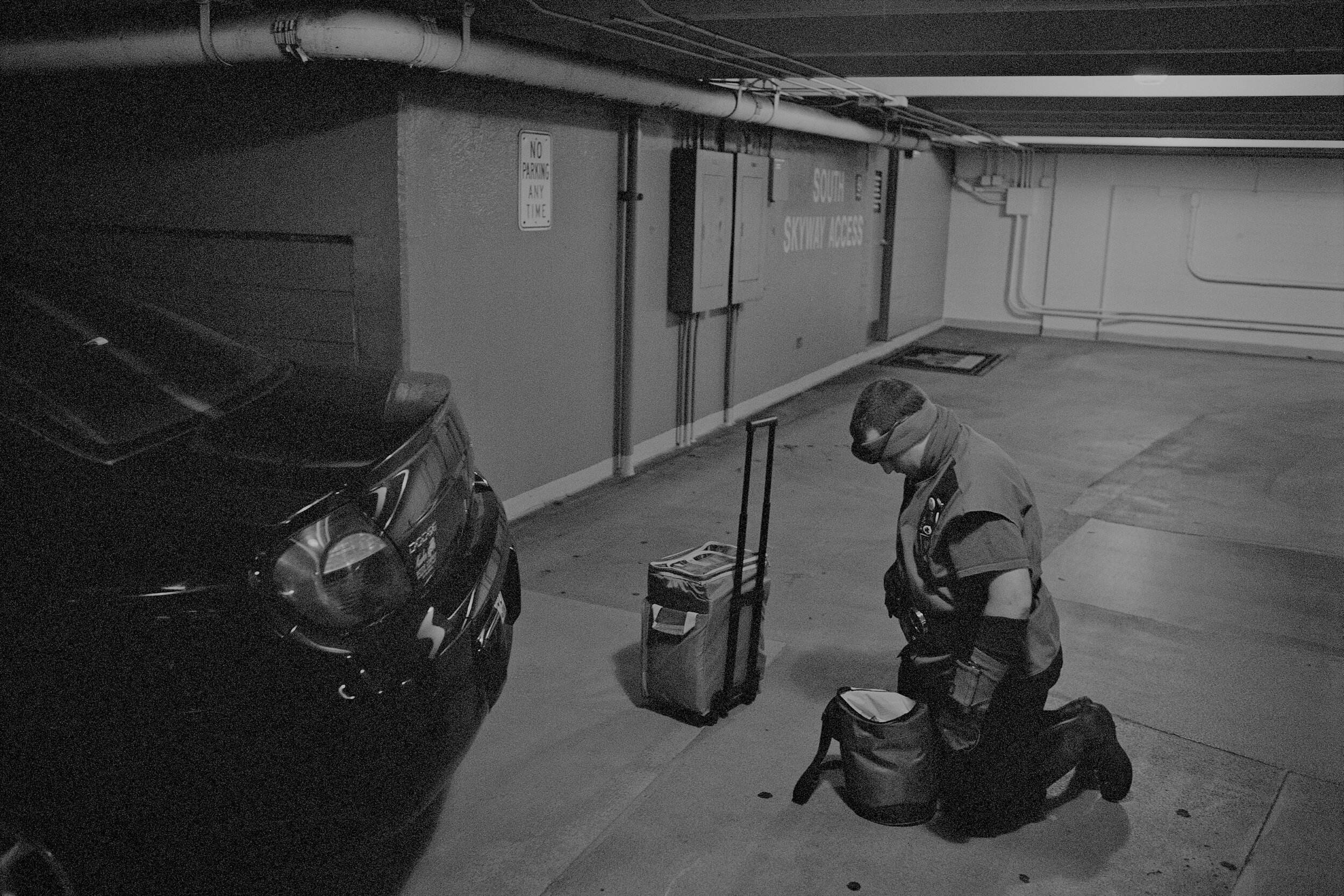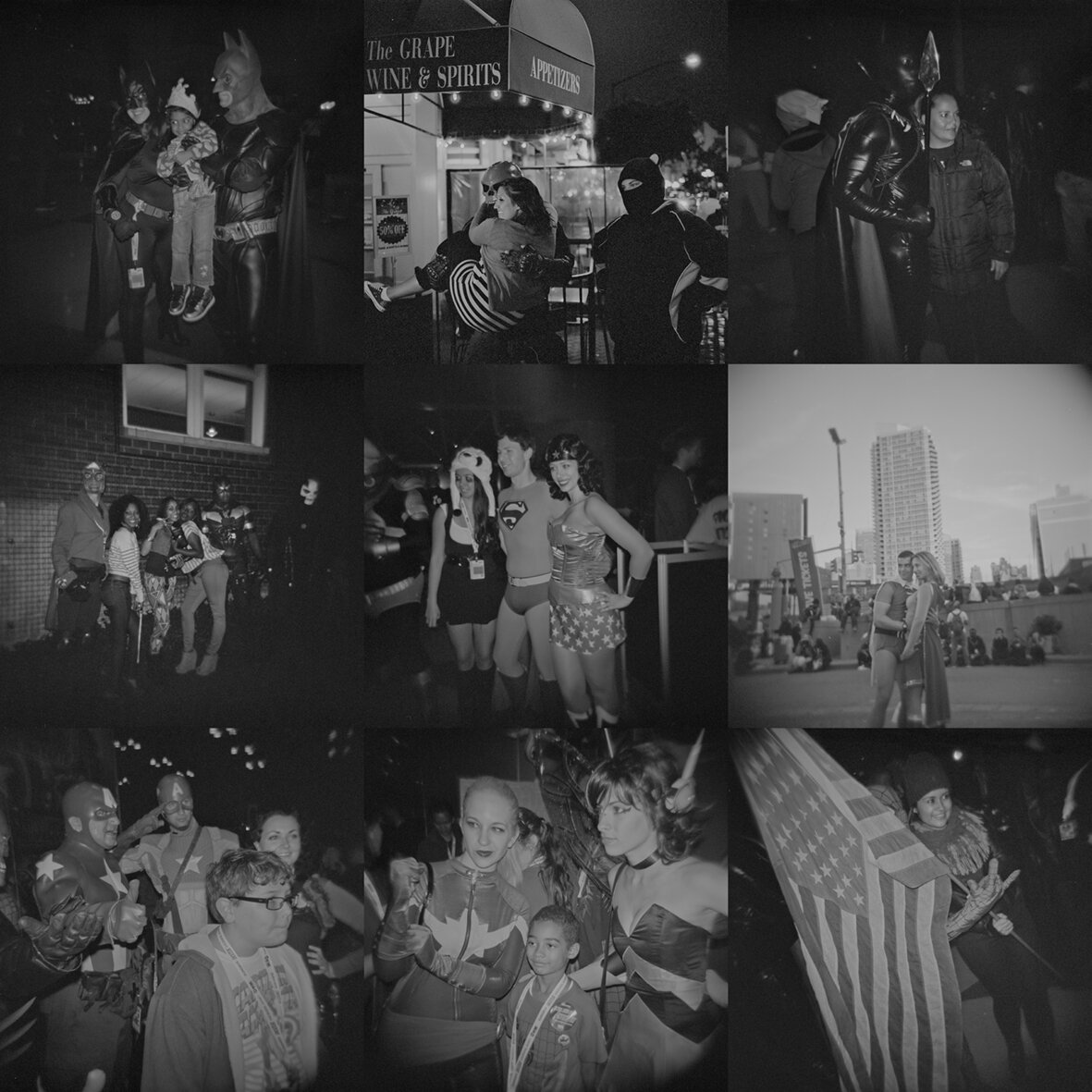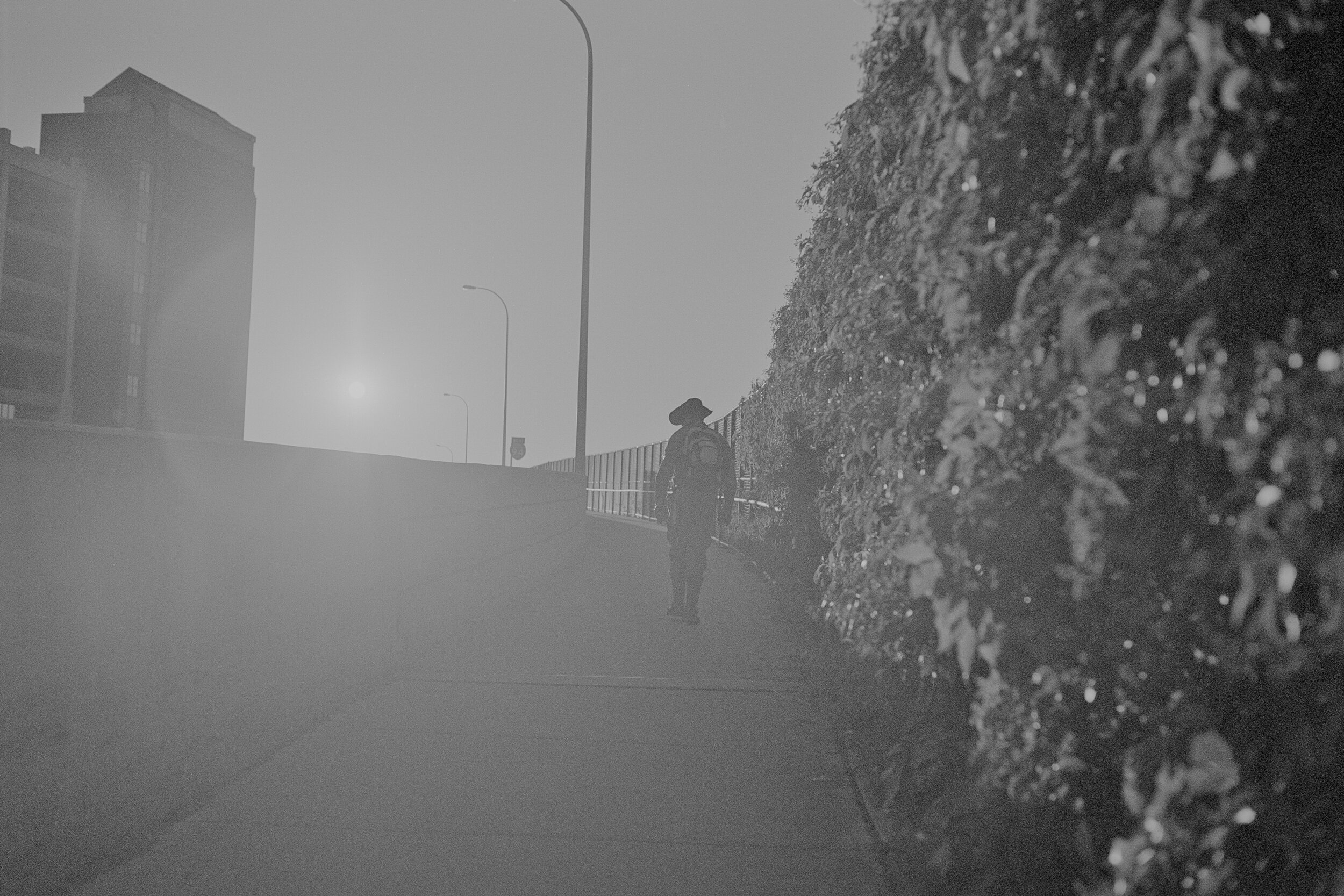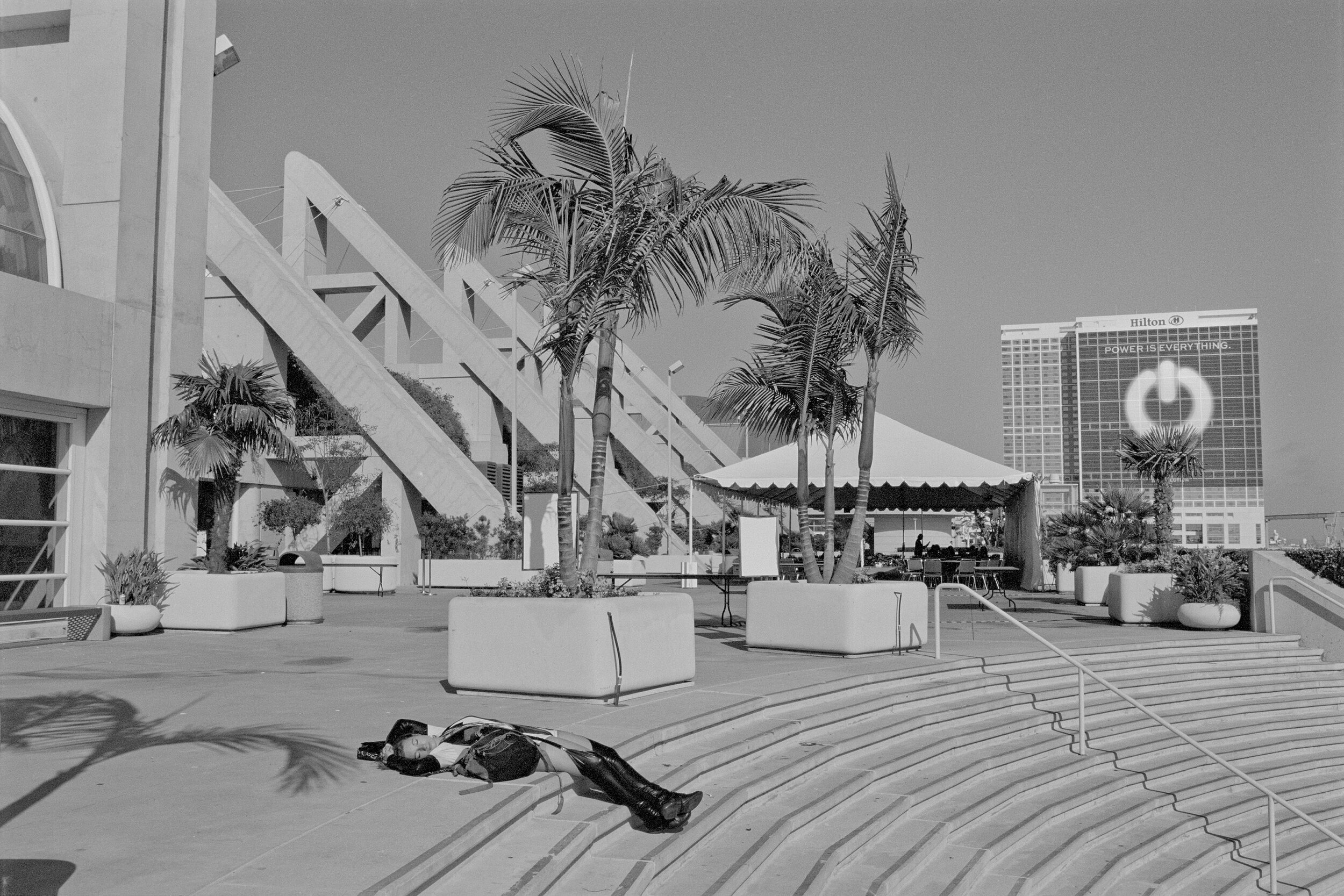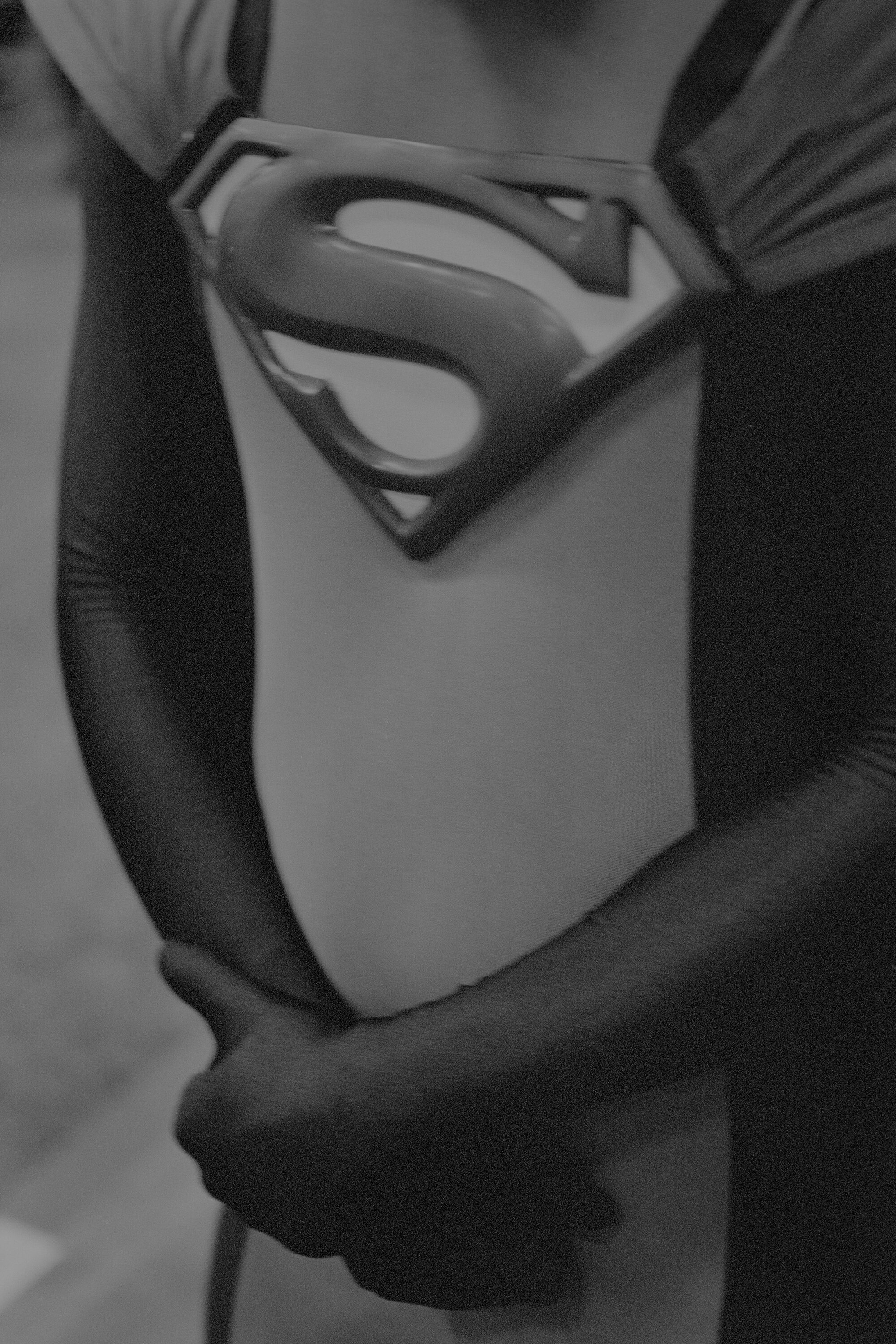Behold!
By 2012, superheroes were in the midst of a resurgence of popularity. Marvel’s Cinematic Universe was well underway, and DC had their own film success with The Dark Knight Trilogy and had relaunched their comics with The New 52 line. After reading Grant Morrison’s 2011 book Supergods: Our World in the Age of the Superhero, which traces the history of superheroes as a cultural phenomenon that adapts to fit the values of each generation, I decided to photograph them.
I photographed superheroes in two situations: cosplayers at Comic-Con dressed as familiar DC and Marvel characters, and the communities of Real-Life Superheroes who have created their own original characters. I then edited those together as one story; my goal was to present superheroes as if they lived in the real world, as prevalent as they are in our imaginations.
Looking back now, I realize that this work had little to do with superheroes. I was working some things out in my head. I was thinking about how photographs can lie; documentary photography depends on the moment you choose to photograph, what you choose to include, what you choose to omit.
I began this project just a few months after starting Everyday Africa. In both cases, I was thinking about photographers building worlds for other people to look at. My colleagues and I started Everyday Africa because we were tired of the war-and-poverty Africa that had been constructed by image-makers before us. We knew that that narrative was limited and incomplete.
Basically, I thought, if photographers can distort other cultures by showing limited narratives about them, then I can intentionally use a limited narrative to create a fictional, superhero world. I wanted to use “real” moments, photographs that don’t break any rules of documentary photography, to tell a fictional story. Supergirl looks up over her shoulder – does she hear a far-off call for help? Is she about to spring into action, to save the day? Or did I catch a momentary glance that, in the right context, merely implies this? Is there some drama unfolding in these images, or is it a trick of the edit, as Wonder Woman looks at Batman with concern after she kisses Superman? For some of these frames, I was careful to position myself and my camera to exclude anyone around who was not a superhero, just as we selectively choose our narratives in photojournalism.
This strange step into documentary-fiction was a meditation on what photojournalists do – while our work is not fictional, it is selective and limited. We build worlds; audiences view them as real. It is an incredible power. And with great power…
